Notes
Matches 801 to 1,000 of 1,040
| # | Notes | Linked to |
|---|---|---|
| 801 | --- "Brighton College School Magazine" (Unknown Date, after 1918): Nicolas de Plaoutine (1884-86) died of black small-pox in the South of Russia, after having suffered terribly during the Revolution. He was a General in the Imperial Army, and commanded a regiment of Cossacks raised on his father's estates.  | Plaoutine, Major-General Nikolai Sergeyevich (I00700)
|
| 802 | --- "A History of the County of Brecknock", Theophilus Jones, 1809: "On the same wall [eastern pine end wall], northward, a marble monument records the interment of Esther Elliston of London, spinster, who died November 10, 1737, aged 37, and of Elizabeth Elliston, her sister, who died May 1757, aged 55. Argent, an eagle displayed sable. Still nearer to the churchyard, another marble monument to the memory of Henry Williams of this town, gent., obiit 1736, aet. 74; Johanna ejus Uxor, obiit 1731, aet. 66; Thomas Williams, clerk, (late vicar of Brecon) obiit 1787, aged 89, Catherine (Elliston) his wife, 1752, aged 46; Edward Williams, gent. in ---------, aged 51, and Joan, his wife. Arms, quarterly 1st and 4th, Cradoc ap Gwilym 2d and 3d, gules, 3 castles triple towered proper, impaling Elliston." | Elliston, Hester (I00341)
|
| 803 | --- "A History of the County of Brecknock", Theophilus Jones, 1809: "On the same wall [eastern pine end wall], northward, a marble monument records the interment of Esther Elliston of London, spinster, who died November 10, 1737, aged 37, and of Elizabeth Elliston, her sister, who died May 1757, aged 55. Argent, an eagle displayed sable. Still nearer to the churchyard, another marble monument to the memory of Henry Williams of this town, gent., obiit 1736, aet. 74; Johanna ejus Uxor, obiit 1731, aet. 66; Thomas Williams, clerk, (late vicar of Brecon) obiit 1787, aged 89, Catherine (Elliston) his wife, 1752, aged 46; Edward Williams, gent. in ---------, aged 51, and Joan, his wife. Arms, quarterly 1st and 4th, Cradoc ap Gwilym 2d and 3d, gules, 3 castles triple towered proper, impaling Elliston." | Elliston, Elizabeth (I00340)
|
| 804 | --- "A History of the County of Brecknock", Theophilus Jones, 1809: "On the same wall [eastern pine end wall], northward, a marble monument records the interment of Esther Elliston of London, spinster, who died November 10, 1737, aged 37, and of Elizabeth Elliston, her sister, who died May 1757, aged 55. Argent, an eagle displayed sable. Still nearer to the churchyard, another marble monument to the memory of Henry Williams of this town, gent., obiit 1736, aet. 74; Johanna ejus Uxor, obiit 1731, aet. 66; Thomas Williams, clerk, (late vicar of Brecon) obiit 1787, aged 89, Catherine (Elliston) his wife, 1752, aged 46; Edward Williams, gent. in ---------, aged 51, and Joan, his wife. Arms, quarterly 1st and 4th, Cradoc ap Gwilym 2d and 3d, gules, 3 castles triple towered proper, impaling Elliston." | Elliston, Catherine (I00338)
|
| 805 | --- "Abercorn: The Hamiltons of Barons Court" by William J Roulston, 2014, page 90-1 There was no member of the family quite like the 1st Marquess before him, nor has there been one since. Anthony Malcomson, in the only recent essay that considers him in any detail, believed him to be "perhaps a fitter subject for fiction than biography". Elsewhere he has described him as "that truly proud northern leviathan". The Marquess' great-grandson, Lord Ernest Hamilton, who devoted a chapter to him in his book "Old Days and News", wrote that while he "could not, strictly speaking, lay claim to be reckoned, on all points, an exemplary character, he was, beyond question, an interesting one". A contemporary, the novelist Lady Morgan, wrote, "He was so organised to be the man he was that no education or example could have made him otherwise. Had he occupied the throne of his ancestors, he would have been the justest despot that ever reigned." The society hostess Lady Holland observed, "He is haughty and capricious, with enough of vanity to make him do a generous action, and with a dash of madness to make him do a lively one." Many of those who have commented on him have focused on his eccentricities or behaviour arising from his undoubted pride --- stories that he insisted his maidservants wore white gloves when changing the bed sheets or that he wore his Garter while out shooting. . . . His friend Sir Walter Scott called him "much misrepresented". The Marquess conduct at times may well have earned him the epithet "Don Magnifico" . . . --- "The Scots Peerage" (Edinburgh, Scotland: David Douglas, 1904), volume I, page 66-8: John James, ninth Earl of Abercorn, only son of the Hon. John Hamilton, was born after his father's death, July 1756. He was educated at Pembroke College, Cambridge, where he graduated M.A. in 1776, and was elected member of Parliament for East Looe, in Cornwall, on a vacancy in November 1783, and chosen for St. Germans at the general election 1784. He succeeded his uncle in 1789, as Earl of Abercorn in Scotland, viscount of Strabane in Ireland, and Viscount Hamilton in Great Britain. On 19 Jul 1790 he took the oaths and his seat in the House of Lords in Ireland. At the general election of the sixteen representatives of the Scots Peerage, 11 July 1790, the clerks refused to receive his signed list, as he had been created a peer of Great Britain since the Union. The question was carried to the House of Lords, where, 13 May 1793, in a committee for privileges, the point was decided in his favour. Meanwhile the Earl was created on 15 October 1790, Marquess of Abercorn; and was sworn of the Privy Council in Ireland 7 February 1794. He was nominated a Knight of the Garter 17 January 1805, and installed at Windsor on St. George's Day, 23 April following. A curious account of the almost royal progress of the Marquess and his family through Scotland on their way to Baron's Court in August 1813 is given by Sir Walter Scott.* He married first, 20 June 1779, Catherine, daughter of Sir Joseph Copley, of Sprotborough, co. York, Baronet, by Mary, daughter of John Buller of Morval, Cornwall, and by her (who died at Stanmore Priory, Middlesex, 13 September 1791, and was buried 19 September, at Stanmore) had six children. . . . The Marquess married, secondly, 4 March 1792, his cousin, Lady Cecil Hamilton, daughter of his uncle George already mentioned, and by her had a daughter. . . . The Marquess married, thirdly, at her brother Viscount Sudley's house in Dover Street, Piccadilly, 3 April 1800, Lady Anne Jane, relict of Henry Hatton of Great Clonard, in the county of Wexford, member of Parliament for the borough of Donegal, to whom she was married October 1783. She was born April 1762, eldest daughter of Arthur Saunders, second Earl of Arran, in Ireland, by his first wife, the Hon. Catherine Annesley, only daughter of William, Viscount Glerawley. She died, without issue, at Naples 3 May 1827. The Marquess died 27 January 1818; his will, dated 18 March 1809, with four subsequent codicils, was proved in London 9 May 1818, and was succeeded by his grandson. * "Life of Scott" iv. 95. Sir Walter was a frequent visitor to Stanmore Priory, and while there in April 1807 was correcting a proof of the Introduction to "Marmion", Canto 1., which contains the complimentary lines on Pitt and Fox. Lord Abercorn suggested that the tribute to Fox should be heightened, and it is said he himself penned several lines of eulogy. "Familiar Letters", i. 82. The "Lady of the Lake" was dedicated to the Marquess. | Hamilton, 1st Marquess Abercorn John James (I00440)
|
| 806 | --- "Bath Chronicle and Weekly Gazette" 03 Mar 1796, page 3: Tuesday died in a very advanced age, at her house in Belvidere, Mrs. Gibbon, mother of the late celebrated historian. --- "Hampshire Chronicle" 05 Mar 1796, page 2: Same day died at her house in the Belvidere, Bath, Mrs. Gibbon, mother-in-law of the late celebrated historian. | Patton, Dorothea (I144)
|
| 807 | --- "Derby Mercury" 22 Aug 1755, page 2: Last week the Right Hon. the Countess Gower, and Lady Frances Vernon, were over-turned in a chaise near Trentham in Staffordshire. Lady Gower has since been brought to bed of a dead son. | Leveson-Gower, Stillborn Son (I148)
|
| 808 | --- "Edward Gibbon, 1737-1794" by D.M. Low, 1937, page 3-5: Gibbon was in fact under five feet in height, and Lord Sheffield remarks that although he became extremely corpulent in later years, his bones were small and finely made. Fanny Burney gives a vivid confirmation of this. She met Gibbon for the first time in 1782 when she was in the first flush of fame from Evelina. 'His neat little feet are of a miniature description and with these as soon as I turned round he hastily described a quaint sort of circle, with small quick steps and a dapper gait, as if to mark the alacrity of his approach, and then, stopping short when full face to me, he made so singularly profound a bow that -- though hardly able to keep my gravity -- I felt myself blush deeply at its undue but palpably intended obsequiousness.' . . . Miss Burney found his look and manner 'placidly mild, but rather effeminate,' and his voice when he talked with Sir Joshua 'gentle but of studied precision of accent'. Most witnesses agree on his deliberate and rather affected manner of speaking, and Suard says he spoke in a falsetto tone. . . . With age he gave increased attention to his appearance. In the year after his appointment as a Lord of Trade he had a tailor's bill for £145 14s. 10-1/2d. His taste was loud even for that colourful period. We can still read of his 'Burgundy coloured cloth frock with orange shag velvet waistcoat, laced with gold and silver lace,' etc. Quantities of lavender water, pomade and powder were no doubt not exceptional, but it is difficult not to smile at his using bandeaux for the hair at night. He wore his own hair in later years. A lock preserved in the British Museum is of a deep red colour with few signs of grey. --- "Northampton Mercury" 25 Jan 1794, page 4: Thursday died, at his lodgings in St. James's-street, Edward Gibbon, Esq. author of the celebrated history of the decline and fall of the Roman empire, &c. -- Mr. Gibbon was in his 58th year. He had come several months ago on a visit to England, and purposed again returning in the Spring, to his charming house at Lausanne. He had lately undergone the palliative operation for the hydrocele, but the cause of his death was a gouty spasm in the stomach. His sufferings were short, for he enjoyed his usual flow of spirits, and conversed with as much gaiety as he writes, the night before his death. | Gibbon, Edward (I00383)
|
| 809 | --- "England & Wales, National Pobate Calendar" (1950, Fahorn-Gysin, image 39 of 434): Eliot, the honourable Edward Granville of 3 Park Village West London N.W.1 and of Long Green Farm House Little Saling Essex, died 10 February 1950 at 2 Seaford Court, Great Portland-street, London W.1 Probate London 4 April to Peter Charles Eliot and Walter Arbuthnot Prideaux solicitors. Effects 25,387 pounds 14s. 2d. --- "The Times" 11 Feb 1950, page 1: ELIOT.--- On Feb. 10, 1950, the Hon. Edward Granville Eliot, of 3, Park Village West, Regent's Park, N.W.1., aged 72. Cremation at Golders Green on Tuesday, Feb. 14, at 12.30. No flowers. --- https://pops.baylor.edu/ 18 November 1907 - Paris Monday. 18th [November 1907]. I took leave of Angela Reinelt whose guest I have been in Paris & left by 10 o'cl train for London where I arrived at 5 after a perfectly calm passage. Bessborough kindly sent his motor brougham to the station to fetch me & with it a note to say Connie wanted me to dine with her tonight as she was giving a party to celebrate her son Eddie's engagement to Clare Philips & he wd take me there in the motor if I wd go. I agree to this & he fetched me & took me to 8 Onslow Gardens. I met the bride elect & her father & mother Mr & Mrs Philips. Eddie was not there as he had retired into a nursing home to have a cyst cut out of his neck. The Philips invited me down to Montacute for the wedding on 3rd Decr & I accepted. I got home after 11 very tired. Clare Philips seems a nice bright girl & Eddie has been taken into partnership as a solicitor by her uncle, wh makes the marriage possible. --- https://pops.baylor.edu/layard/ 2 December 1907 - Montacute House, Montacute, Somerset Monday. 2nd December [1907]. I left Inwood & went by train to Yeovil whence I drove in a fly to Montacute to stay with Mr & Mrs Philips on the occasion of the marriage of their girl Clare to my nephew Edward Eliot. Found Connie already there-she had got a violent cold in her head & I had to get her to keep most of the afternoon in her room by a warm fire & she got better. Montacute is a lovely old house in the style of Hatfield but not well kept up & it was very cold & draughty. There was a large party staying in the house relations of both families. The wedding gifts were all displayed on the billiard table & many neighbours came over to see them. Mr Philips' aged mother-of 91-lives in the house-a charming little rosy cheeked old lady who entered into all that was going on & is very courteous & kind to all. Miss Buller (daughter of Sir Redvers) was here-to act as one of the bridesmaids. Evely Eliot, the brothers of the bride & her married half sister &c. In the evening there was a dance in the hall & several neighbours came over amongst them my niece Mildred Mansel & her husband. It was a very cold night. Connie seemed to have recovered from her cold & danced energetically most of the evening-with men and women. --- https://pops.baylor.edu/layard/ 3 December 1907 - Montacute House, Montacute, Somerset Tuesday. 3rd [December 1907]. The wedding day. Mr Philips took me in a motor over to Brimpton to see Sir Spencer Ponsonby Fane grandfather of the bride. Sir Spencer showed me some of his interesting collections such as buckles of wh he has a lot-pictures-fans-china &c. Amongst other things he showed me the hour glass wh had stood in the Ducal Palace in the room of the Council of Ten wh had been given to Lady Westmorland & identified by Mr E. Chaney- We had to hurry over the visit & get back to an early lunch before the marriage wh was at 2 o'cl. We drove to the church wh was very near the house. The Church was full & the bride & her father arrived soon after us. Evely Eliot played the organ & began with a hymn sung by the choir. All went well-the church was crowded & prettily decorated with flowers. After the service Mr Philips took me to see the remains of the Abbey convent close by wh had belonged to some French monks who were dispossessed by Henry VIII & their lands given to the Philips family. We returned to Montacute & tea &c was served in the hall many neighbours having come in to it. The happy pair started abt 5 for London & the next day left for Venice where they are to stay at Ca' Capello wh I have lent them. We had a quiet evening & went early to bed. Old Sir Spencer Ponsonby proposed the health of the Happy Pair before they departed. He is over 80 but yet hale & hearty. | Eliot, Edward Granville (I00252)
|
| 810 | --- "England & Wales, National Probate Calendar, 1858-1995" (1863, Cadaby-Cuxon, image 291 of 539): Cotton, William, Esq. Effects under £10,000. 24 February. The Will with a Codicil of William Cotton formerly of Highland House Ivybridge but late of Plymouth both in the County of Devon Esqure deceased who died 22 January 1863 at 8 West-Hoe-terrace, Plymouth, aforesaid was proved at the Prinicipal Registry by the oaths of Robert Hudson of Clapham Common in the COunty of Surrey Esqure and Charles Borradaile of Lincoln's Inn in the County of Middlesex Esquire the Executors. | Cotton, William (I160)
|
| 811 | --- "Gentleman's Magazine" vol. LXXXII, 1812, page 591: Oct. 18. At Winkfield-place, Berks, in his 85th year, Stanlake Batson, esq. --- 17 Feb 1772 High Sherriff of Berkshire for 1-year Term --- "The Nabobs in England: A Study of the Returned Anglo-Indian, 1760-1785" by James M. Holzman, Columbia University, 1926, p. 132-3: Batson, Stanlake. Born about 1730. A connection of Edward Buckley Batson, London banker contemporary with him. Arrived in Bengal, 1746. Junior Merchant, Member of Council at Cossimbuzar, 1756. Imprisoned by Siraj-uddaula. Senior Merchant, Assistant Military Storekeeper, 1757. Afterwards a Member of the Governor's Council, suspended by Clive. Had 7,800 pounds worth of India Stock standing in his own name in 1773. Settled at Winkfield Place, Berks. Sheriff, 1772. Steward of Ascot Races, 1781. Died at Winkfield, Oct. 18, 1812. . . . [Sources] Hill's Bengal in 1756-1757, vol. III, p. 412; vol. I, pp. lviii-lx; vol. III, p. 414. Victoria History of Hants, vol. V, p. 130. Burke's Peerage, 1925, under Westmoreland. India Office, Home Miscellaneous, 78. List of Sheriffs in Berry's Berks Pedigrees. Racing Calendar, May 30, 1781. Gentleman's Magazine, 1812, p. 591. | Batson, Stanlake (I00053)
|
| 812 | --- "Gentleman's Magazine"1790, Vol. 68, page 669: Lately. At King's Cliffe, co. Northampton, aged 86, Mrs. Esther Gibbon, a worthy lady, who had both the ability and will to do much good to those around her. --- "Stamford Mercury" 16 Jul 1790, page 3: Lately died, at King's Cliffe, in Northamptonshire, aged 86, Mrs. Esther Gibbon; a worthy lady, who had both the ability and will to do much good to those around her. --- "Edward Gibbon, 1737-1794" by D.M. Low, 1937, page 13: Hester took after her father in the manly vigour of her understanding, and in a certain rigidity and even moroseness of temper. She became an apt disciple of Law's religion without relaxing her grasp on the affairs of this world. People spoke of her as a very good sort of lady but looked on her as a little mad. She was an undoubted Miranda. | Gibbon, Esther "Hester" (I00386)
|
| 813 | --- "Hampshire Chronicle" 25 Dec 1786, page 3: Lately died, at Bramdean, near Alresford, in this county, Lieutenant Colonel John Van Tulleken, late of the 45th regiment. He was uncle to the late Countess Cornwallis. --- "The Political Magazine" Vol. 11, 1786, page 478: Deaths. Lately, near Alresford, Hants, Lieutenant Colonel John Van Tulleken, late of the 45th regiment. He was in several battles, and wounded in most of them; most severely wounded at Fontenoy, where his brave father fell. He retired from the service in the year 1769: he was uncle to the late Countess Cornwallis. | Tulleken, John (I02015)
|
| 814 | --- "History of the Borough of Liskeard", John Allen, 1856: 1806: "Received of Lord Eliot to pay one year's salary to the Rev. Mr Greene (master of the Grammar School) £121 (repeated afterwards)" 1814-15: "The Rev. A Laffer one year's salary to Midsummer, 1815 (less income tax) £90 (this amount received from the Earl of St Germans, being the last payment to the master of the Grammar School)." "The great contest for the representation of the borough was in 1802, when Thomas Sheridan and William Ogilvie, Esqrs., each of whom had the votes of one freeman, and of forty-eight inhabitants paing scot and lot, or householders, petitioned against the return of the Hon. John and William Eliot. A similar petition was presented at the same time by sundry persons claiming to be electors." "Under the head of charitable foundations, the 'East Cornwall Savings Bank' requires to be noticed. It was established at Liskeard in 1818, the first 'patron' being William Earl of St Germans, who also headed a list of donations to set it on foot." 1833: "The corporation formerly paid the salary of the schoolmaster, but of late years it was paid direct by the patron of the borough, the late noble Recorder (the Earl of St Germans). A school house was erected by subscription on land granted by the corporation. About a year ago the school was closed, the master having left, and the means of support being withdrawn. Since that time there has been no public school." 1833: The Mayor's salary was £60, the Constables £40, and the Mayor's Clerk £10 10s. | Eliot, 1st Earl St. Germans, John (I00283)
|
| 815 | --- "Les Familles Princières de l'ancien Empire de Russie en émigration" by Jaques Ferreand, 1980, page 54: Prince Sergei Borisovich is Stcherbatov - St. Petersburg 01.21.1870 and 05.31.1919 Kharkov. He married in St. Petersburg 12.01.1897, Elisabeth Sergyevna Plaoutine, St. Petersburg 02.03.1875 Smolensk 1921 (shot to death). --- "Nouvel Almanach du Corps Diplomatique: Ancien Almanach de Gotha" C.A. Starke, 1939, page 634: (Stcherbatov, Scherbatow, Scherbatoff) Serge, born in St Petersburg 21 Jan 1870 f Kharkov May 31, 1919, att. the min. the Russian interior, m. St Petersburg 12 Jan 1897 Elisabeth Plaoutine (Hered Russian nobility.), born in St. Petersburg March 2, 1875, f (shot to death) to Smolensk. . . 1921 Bridesmaid empresses of Russia Children: 1 Prof. Boris born in St. Petersburg October 17, 1897 (rifles) has Archangel 1920 Russian apirant 2) Psse Elizabeth, born in St. Petersburg November 5, 1898 3) Psse Marie, born January 5, 1900 in Florence 4) Psse Irena, born September 2, 1901 in Lebanon (Executed) Smolensk 1921 - - - - - - - - - - - - - - - - - - - - - - - - - - - - - - - - - - - - - - - - - - - - - - - - - - - - - - - - - - - - - - --- "A Numerous and Fashionable Audience: The Story of Elsie Swinton" by David Greer, Thames Publishing, 1997: Page 15: At Peterhof there lived another of Elsie's friends, Elizabeth Plaoutine, known as Lily. The Plaoutine family was of Scottish origin and the name had originally been Plowden. In the time of Peter the Great many Scots families had settled in Russia and some had been elevated to the nobility. Lily's father, Lieutenant-General Sergey Nikolaevitch Plaoutine, had a post at the imperial court. Her mother was an English-woman whose maiden name had been Pringle. Lily and Elsie were apparently distantly related, for Lily claimed her friend as her fifth half cousin. Lily would drive over from Peterhof in a low carriage with a pair of ponies in Hungarian harness, with bunches of feathers on their heads. She, Elsie, Eleanore, Maria, and a few others had their own secret society of 'Bondfriends'. Page 51: . . . on the journey they met Elsie's girlhood friend from St. Petersburg days, Lily Plaoutine. Elsie and Lily had not seen one another for at least six years, and in the meantime they had both married and had had two children. Lily, who was now a Lady-in-Waiting at the Russian court, was with her husband, Prince Sergey Sherbatov, and they all completed the journey to Dresden together. - - - - - - - - - - - - - - - - - - - - - - - - - - - - - - - - - - - - - - - - - - - - - - - - - - - - - - - - - - - - - - --- http://smolmitino.ru Manor was founded in the late XVIII century. landowner GA Kakhovskii (Decembrist PG Kahovsky father), then to the middle of the XIX century. Lieutenant owned PE Sokolovsky, then - his son Colonel NP Sokolovsky and then his successors, with the end of the century - the book. Scherbatova, the last owner prior to 1917 kN. ES Shcherbatova. There was ruinirovannaya Transfiguration Church in 1795 in the classical style, it was badly damaged during World War II; She had about burial Sokolovsky. A two-storey main house of the palace-type in the style of classicism lost Vyacheslav said: 03/29/2014 - 16:33 Tserkov Transfiguration during the Second World War was not damaged, it rabatala until 1960, and was destroyed by the communists and activists in front of me. Alexander said: 07/28/2015 - 23:36 The village "Transfiguration", a manor house on the hill, garden, down to the river, a mill - a picture I have such a family. Mom always said, "Transfiguration" - our estate. However, I did not specify exactly whose it: Raczynski, Deryuzhinsky, Kakhovskaya whether Shcherbatov ... For all of them are close relatives. The brother of my great-grandfather Alexander Raczynski (1826-1877), writer, historian, diplomat, ending his diplomatic service he settled in the family estate in the village of Mitino, selling the rest of their possessions for the wife and daughter of his studies, to send his son to the military service, while continuing to host Bulgarians students. - - - - - - - - - - - - - - - - - - - - - - - - - - - - - - - - - - - - - - - - - - - - - - - - - - - - - - - - - - - - - - --- http://magazines.russ.ru/nj/2003/233/sherbat.html In Smolensk, my family members were shot: my cousin Irina is 17 years old, my cousin Dmitry is 14 years old, my uncle Sergey Borisovich Shcherbatov with his wife Elizaveta, nee Plautina, aunt, Princess Khovanskaya. Her line after this "purge" ceased. I wrote down all the coordinates, but I did not immediately tell anyone. I arrived the next day alone, opened the first box, there were about 20 tons of documents. I did not get the Shcherbatov case, but it was supposed to be there. I doubt that I could find him alone. But here, one might say, was lucky: Alexander von Engelhardt helped me. From him I learned the history of the archive and details of the shooting of my family. .. . The Cheka began to operate from the end of 1917. The former gendarmes and policemen, nobles, merchants and priests, cadets, schoolboys, students were exterminated. Shot not only adults but also children. "The Shcherbatov case" was found in documents for 1921: arrest, interrogation, sentence to be shot. Uncle's wife, who was very fond of Russia, was a half-English woman, and the reason for the arrest with the wording "English spies" was the family's affection for the English language. Something I was enchanted by Engelhardt, who himself interrogated my relatives: "Irina's cousin, she seemed to be afraid of nothing. She said: "I hate you. You are traitors to my homeland. " She was shot the next morning. There were also two Chekist brothers, Pavel and Grigory Neubergi, who at that time were twenty and twenty-one years old, then they changed their surname to Newberg. These two, after the Civil War, worked in Berlin with Rosengolz at the USSR Ministry of Trade. Both fled in the 28-29 years from Berlin to the West, capturing quite a lot of money. Paul married Olga Zhigalova, also from Smolensk, a well-known woman in America, who wrote an interesting book about her Smolensk life. Paul died in the United States. Little detail: my sister Elena accidentally met Olga in Switzerland, and they maintained close friendly relations for a long time, until I told Elena that Olga Zhigalova's husband had interrogated our sister Irina. The rupture somewhat spoiled the social status of Mrs. Zhigalova. Nevertheless, their son became a lawyer, married the daughter of the American millionaire Vanderbild. And I remember Irina. Last time we met in Petersburg, she was then 15-16 years old, I was 6 or 7. Very beautiful and affectionate, always took me in my arms and kissed her head. I had such a special feeling for her. Uncle Sergey, a well-known artist, loved his estate near Smolensk, not far from the Goat Hills, and did not want to leave it. He gave them out as "British intelligence officers" Alexander Engelhardt. In the Goat Hills, with the shooting of my relatives, the GPU cemetery began, where five thousand Polish officers were destroyed many years later. ["The Goat Mountains" refers to Kozy Gory, a hamlet in the Smolensk area, close to Katyn.This was the site of the infamous massacre of Polish officers in WWII. GPU (Gosudarstvennoye Politicheskoye Upravlenie - State Political Directorate) was the official designation of the Cheka 1922 - 1923. Apparantly some or all of the Katyn Forest victims were buried in Kozy Gory.] . . . He could not know that part of my family was left under Stalin's government, but I did not want to go into details. The fact is that two sisters from the Shcherbatov family who were shot, Tatyana and Elizabeth, were able to escape. Tatiana went to Petrograd. She was helped by the friends of her grandfather Shcherbatov's sister, the famous countess Uvarova, an archaeologist who had high prestige in Russia. The countess' husband, who was born Shcherbatova, Earl Uvarov was also a well-known archeologist, a specialist in Scythian burials. Many burial mounds were found by this couple. Uvarov by this time died, the countess went to Yugoslavia. Tatyana in Petrograd was helped by good acquaintances of the Uvarovs, just kind people. Tatiana painted beautifully, they sent her to Georgia, to Tiflis. She graduated there school and became a famous painter-restorer. She sketched the unique Georgian frescoes that adorned the Orthodox churches, which were preserved in the mountains from the 8th to the 9th centuries until the arrival of the Arabs. Now there's Muslim Chechnya. I have a magazine "Paris Match", dedicated to her work and life stories. She is considered the only expert in Georgian frescoes in Russia. Tatyana, undoubtedly, has done a tremendous historical work. Most of the drawings were in the Tiflis Museum, and many died in 1990-91 during a fire, during the riots in Georgia during the partition of the USSR. After that, in 92-93 she returned to Moscow, bought a house in the Moscow suburbs, and lives there. I saw her only once in 91, when I came to Moscow. Tatiana specially arrived for a meeting. Very sweet and intelligent, she did not want to talk about Smolensk: "We will not talk about this. I suffered so much. " Financially, she was helped from France, where money was left for her. My aunts - Mary and Anyuta (Golitsyna), born Shcherbatov, died. But before the revolution, Grandma Shcherbatova, the father's mother, had one of the famous diadems of Empress Josephine, the wife of Napoleon Bonaparte. In 1914, the diadem, after the restoration, was sold. Two sisters inherited money. Anyuta invested some money in a plot of land in the south of France, near Cannes. This property is actually owned by Tatiana and Elizabeth. I saw Elizabeth only in my childhood, at the age of six. I know that she, after parting with Tatiana, fled to Siberia and was teaching English in Krasnoyarsk, died there, and very early. Tatyana now should be about 96 years old. She was married to Kovalevsky, who was a student of the St. Petersburg Lyceum in the early 1930s. He was shot in a few years. From this marriage there was a daughter and a son. Daughter, known in Moscow as a professor of history. I saw her in Belgium when she came to visit my sisters, Olga and Anna, who, basically, and kept in touch with her. She seemed to me an interesting interlocutor, a competent historian, an intelligent, but somewhat exalted woman. And with her son, a pretty nice boy, but similar to a long-haired hippie, I could not find a common language. He is now about 40 years old, probably changed, turning into an elegant young man. Maybe I took a bit of a preoccupation with him? He was not an angel in his childhood. Recently, analyzing old papers, I found my letter, sent from Constantinople "dear aunt Anyuta." I was very surprised by my intelligence. I quote this funny document. On the other hand, it is clear from the written, what kind of sympathetic, kind and always ready to help was my father's sister. At all, Aunt Mary was no different from her in character. Therefore, my family members were calm for Tatiana and Elizabeth, confident that they are in a good financial situation. - - - - - - - - - - - - - - - - - - - - - - - - - - - - - - - - - - - - - - - - - - - - - - - - - - - - - - - - - - - - - - [THE FOLLOWING WAS TRANSLATED THROUGH GOOGLE TRANSLATE FROM A BLOG ENTRY THAT NO LONGER EXISTS. WHILE IT'S ROUGH, SOME OF THE FACTS ARE QUITE INTERESTING. THE ORIGINAL ENTRY WAS HERE: http://mitino-smol.blogspot.co.uk/2012/06/blog-post_6732.html ] Extensive complex of buildings in the classical forms is precisely princes Shcherbatov (not preserved.) In a. Transfiguration (near the station. Kolodny near Smolensk). Storey palace had a rather complex three-dimensional composition. It included a cupola crowned conch with six Ionic columns on the axis of the front facade on the sides two-storey wings and lower volumes on the flanks. During WWII served as a hospital after the war - a sanatorium for tuberculosis patients. Unfortunately, at the moment of the estate's nothing left. Owners: Shcherbaty Sergey 1870-1919. ELIZABETH wife Plautin SERGEEVNA 1875-1921. Some of the children: BORIS 1897-1920, DMITRY 1903-1920, TATIANA 1905. Please note that all ended their lives around the same time. Shooting or intolerable living conditions? Alas, the shot. book. Shcherbatova (eq. Plautin), Elizabeth S. (1875-1921), was shot along with his family and household, on charges of belonging to a "criminal counter-revolutionary organization People's Union defend our freedom." book. Shcherbatova Irina (1901-1921), the daughter of the previous one, shot on charges of belonging to a "criminal counter-revolutionary organization People's Union defend our freedom." Family Scherbatova ES, DS, TS Scherbatova (nee Plautin) Elizabeth S.. She was born in 1875. Princess (married Prince Sergei Borisovich Shcherbatova), 1919 - widow. Lived with his son Dmitri and daughters. May 14, 1921 - arrested with his son, daughter Tatyana and a second daughter, as a "counter-revolutionary conspiracy participants," and imprisoned. Soon available together with her daughters, son remained in prison. In 1921 - died. Russia Family Tree. www.vgd.ru / SCH / schrbatv.htm SARF. F. R-8419. Op.1. D. 276. Pp. 17, 50. Shcherbaty Dmitry. He was born in 1903. Prince (father, Prince Sergey Shcherbatov; Shcherbatova mother Elizabeth S.). RESIded in Smolensk, studied at the Institute. May 14, 1921 - arrested in his mother and sisters, was sentenced to imprisonment in a concentration camp and sent to Kholmogorsky camp. October 3, 1921 - a case of "counter-revolutionary conspiracy" has been discontinued, but was not released. In November, taken out of the camp in Arkhangelsk to Moscow, November 23 placed in Vologda county hospital with typhus, Dec. 23 placed in the provincial hospital, died in late December. Russia Family Tree. www.vgd.ru / SCH / schrbatv.htm SARF. F. R-8419. Op.1. D. 276. Pp. 17, 50. Scherbatova Tatjana. She was born in 1905. Princess (father, Prince Sergey Shcherbatov; Shcherbatova mother Elizabeth S.). Lived with his family Smolensk. May 14, 1921 - arrested with his mother, sister and brother Dmitry as "counter-revolutionary conspiracy participants," and imprisoned. Soon available. Poulchila higher education. Art critic, artist copyist, a member of the Union of Artists and Architects of Georgia, Honored Artist of Georgia. In 2000 - died in Smolensk. Russia Family Tree. www.vgd.ru / SCH / schrbatv.htm SARF. F. R-8419. Op.1. D. 276. Pp. 17, 50. - - - - - - - - - - - - - - - - - - - - - - - - - - - - - - - - - - - - - - - - - - - - - - - - - - - - - - - - - - - - - -  | Plaoutine, Elizaveta Sergeyevna "Lily" (I00695)
|
| 816 | --- "Life of William Pitt, Earl of Chatham" by Basil Williams, Volume 1, page 28: William was born on Monday morning at about eight o'clock in the morning. The same book also transcribes his Christening record as follows: "1708 December 13. William, of Robert Pitts, Esq., and Henrietta, born November 15; baptized." In the biography, the godfathers are listed as George Pitt of Strathfieldsaye and General William Stewart (William Pitt's grandmother Grandison's second husband, after whom he was named.). ---------------------------------------------------------- 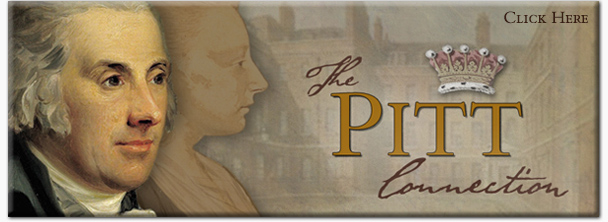 | Pitt, 1st Earl Chatham, William (I00693)
|
| 817 | --- "London Courier and Evening Gazette" 18 Apr 1812, page 4: We are concerned to state that on the 25th of Feb. a most afflicting accident took place on board of the Blake, in the harbour of Port Mahon, in the Island of Minorca: -- Lord Henry Lennox, the third son of their Graces the Duke and Duchess of Richmond, a most amiable and promising youth, in his 15th year, whose taste and spirit had led him to embrace the profession of the Navy, having gone aloft to assist in furling the sails, while the ship was coming to an anchor, most unfortunately fell into the sea; one of his comrades swam to save him -- but alas! melancholy to relate, he was found lifeless, having, probably, received the fatal blow in his fall. His remains were interred in Fort St. Philips, amidst the tears of all present, and deeply lamented by Capt. Codrington, and every individual on board the ship. | Lennox, Henry Adam (I01619)
|
| 818 | --- "London Evening Post" 28 Feb 1744, page 2 On Monday last died Mrs. Elliston, Wife of Edward Elliston, Esq; an eminent Merchant in Basinghall-Street, Sister to Edward Gibbon, Esq; Member of Parliament for Southampton, and Alderman of Vintry Ward. --- "London, England, Baptisms, Marriages and Burials, 1538-1812" (Wandsworth, St Mary, Putney, 1735-1760, 57) --- seen on Ancestry.com Mistakenly listed as Mrs. Catherine "Allinstone". --- "Edward Gibbon, 1737-1794" by D.M. Low, 1937, page 13: The little we know of Catherine Gibbon is not inconsistent with the character of Flavia. She was akin to her brother's spirit and followed him into the society of such people as the Mallets after their father's death. She married her cousin Edward Elliston. Shortly after that John Byrom came to visit Law at Putney, and a comment in his diary that it was such an absurdity to come to communion with patches and paint as no Christians would have borne formerly, is clearly intended for her. Neither she nor her husband enjoyed their world for long, and their daughter Catherine, after their death, lived with her uncle till her marriage in 1756 with Edward Eliot. --- --- "The Autobigraphies of Edward Gibbon" by Edward Gibbon, J. Murray, 1896, page 21 --- seen on Google Books: "Of my two wealthy aunts on the father's side, Hester persevered in a life of celibacy, while Catherine became the wife of Mr. Edward Elliston, a Captain in the service of the East India Company, whom my grandfather styles his nephew in his Will. Both Mr. and Mrs. Elliston were dead before the date of my birth, or at least of my memory, and their only daughter and heiress will be mentioned in her proper place. These two Ladies are described by Mr. Law under the names of Flavia and Miranda, the Pagan and Christian sister. The sins of Flavia, which excluded her from the hope of salvation, may not appear to our carnal apprehension of so black a dye. Her temper was gay and lively; she followed the fashion in her dress, and indulged her taste for company and public amusements; but her expence was regulated by economy: she practised the decencies of Religion, nor is she accused of neglecting the essential duties of a wife or a mother." | Gibbon, Catherine (I00379)
|
| 819 | --- "London Journal" 31 May 1729: . . . and the Lynn, Capt. Edward Eliston, bound for China. --- "Daily Journal" 6 Jul 1730: LONDON. Yesterday Morning the Purser of the Lynn, Capt. Elliston, from China, arrived in Town, having left the said Ship the Day before near Dover. --- "Kentish Weekly Post" 30 Oct 1731, page 1: From the Whitehall Even. Post Oct. 28. Yesterday the Hon. Court of Directors of the East India Company were pleased to appoint Capt. Brown Commander of their Ship the Lynn in the room of Capt. Edward Ellistone, who hath resign'd. --- "General Advertiser" 11 Jun 1747, page 1: On Monday last died, at his Seat near Brentwood in Essex, after a tedious Indisposition, Edward Elliston, Esq; a Gentleman possess'd of a very plentiful Fortune, which he chiefly acquir'd with very great Credit and Reputation, in the Service of the East-India Company. --- "Dundee Courier" 5 Jan 1933, page 12: Men and Women of To-Day Dundee M.P.'s Bride. In marrying a member of Parliament from Cornwall Miss Dorothy Elliston, whose wedding to Mr. Dingle M. Foot takes place at Ipswich on Saturday, is repeating a chapter in her own family history. Catherine Elliston, daughter of Captain Edward Elliston of Overall Manor, near Sudbury, Suffolk, married in 1756 Edward Eliot, M.P. for Cornwall. He afterwards became the first Baron Eliot of St. Germans, and his son was the first Earl of St Germans. This Catherine Elliston's mother was Catherine Gibbon, aunt of the famous historian of the Roman Empire. Many politicians will attend the wedding on Saturday, and Dundee guests will include Lord Provost Buist and Mrs Buist, Mr Harry Johnston and Mrs Johnston, and Mr and Mrs John Martin. - - - - - - - - - - - - - - - - - - - - - - - - - - - - - - - - - - - - --- "Records of Fort St. George Diary and Consultation Book, 1726, Madras Record Office: Fort St. George, February 1725-1726 page 17: "Paid Captain Elliston for Ten Soldier's Diet that came from Vizagaptam . . . 7 28 page 22: "Feb. 20 Ship Lynn Capt. Edward Elliston Commander sailed for London and Carried a paequet for ye Honble Court of Directors. --- "Private Trade Between England and China in the Eighteenth Century" by Earl H. Pritchard, Journal of the Economic and Social History of the Orient, Vol. 1, Issue 1, 1957, page 221: The Export Trade . . . The private trade of Captain Elliston of the Lynn (480 tons) in 1729-30 consisted of 886 ounces of gold (2,500 pounds), 58 piculs of tea (450 pounds), chinaware (318 pounds), arrack (120 pounds), 300 bundles of rattans (15 pounds), 90 cwt. of mother-of-pearl (130 pounds), 50 handkerchiefs (40 pounds), and fans, pictures, lacquered ware, etc (171 pounds), a total of 3,744 pounds --- tls. 11,232. --- https://www.christies.com/en/lot/lot-4911020 Live Auction 1828, 22 May 2007 Lot 169 A Very Fine George II Silver Salver, Mark of Paul de Lamerie, London, 1739. Price Realised: $240,000 Lot Essay: Edward Elliston was in the Marine Service of the East India Company. From 1714 to 1721, he served on Dartmouth as 5th, 3rd, and finally 1st mate. He became Captain of the ship Lynn in 1724, serving intermittently until 1732. . . . | Elliston, Edward (I00339)
|
| 820 | --- "Morning Post" 05 Jul 1872, page 7: On the 1st inst., at 101, Eaton-square, the wife of Lieutenant-Colonel Chetwode, of a daughter. --- "Clifton Society" 15 Dec 1910, page 16: Mrs. Christian Eliot underwent, at 2, Wilton-crescent, on Friday night last, a severe but quite successful operation for abscess on the mastoid bone and is going on satisfactorily. --- "Derbyshire Advertiser and Journal" 16 Dec 1910, page 7: Alice Lady Chetwode's journey to British East Africa is postponed on account of the serious illness of her daughter, Mrs. Christian Eliot. --- "Hampshire Telegraph" 28 Jan 1938, page 20: DEATH OF THE HON. MRS ELIOT -- The death took place at her residence, Sunhill, on Saturday last of the Hon. Mrs. Christian Eliot, at the age of 65 years. She was the wife of Lieut.-Col. the Hon. Christian Eliot, and a sister of Field Marshal Sir Philip Chetwode, Admiral Sir George Knightly Chetwode, and Lady (Noel) Birch. Mrs. Eliot was the elder daughter of the late Sir George Chetwode's surviving daughters -- Mr. Christian Philip Charles Eliot, Mrs. Robert Wigram Crawford, and Mrs. Alexander Erskine Lawrence. The funeral service took place at Brookwood Cemetery on Tuesday morning. A memorial service was held at the Parish Church, Alresford, in the afternoon and was conducted by the Rector (Canon A.J. Robertson). There was a large and representative gathering present from the town and district where she was well-known. The late Mrs. Eliot came to Alresford about 20 years ago, and although taking no active part in affairs, she supported many causes and was a vice-President of many organizations. She was keenly interested in various forms of sport and was at one time a member of the local hockey club. She did a great deal of good in a quiet manner and will be missed by many in the town. --- "The Times" 26 Jan 1938, page 15: The Hon. Mrs. Christian Eliot The funeral of the Hon. Mrs. Christian Eliot took place at Brookwood Cemetery yesterday. The service was conducted by the Rev. C.M. Horley. Among those present were: -- Lieutenant-Colonel the Hon. Christian Eliot, Colonel and Mrs. A.E. Lawrence (son-in-law and daughter), Field-Marshal Sir Philip Chetwode (brother), General Sir Noel and Lady Birch (brother-in-law and sister), the Hon. Edward Eliot (brother-in-law), Mr. and Mrs. R.G. Biard, Mrs. Frank Brooke, the Hon. Kenneth Campbell, Mr. and Mrs. John Chetwode (also representing Mr. Percy Laming), Mrs. Crawley, Miss Hibbert, Mrs. Arthur Hoare, Miss Eleanor Littleton, Miss Morely, Mrs. Geoffrey Peto, Captain Jervoise Scott, and Mr. George Shield. Cremation took place at Woking on Monday. A memorial service for the Hon. Mrs. Christian Eliot was held at New Alresford, Hants, yesterday. Canon A.J. Robertson officiated . . . | Chetwode, Laura Grey (I00113)
|
| 821 | --- "My Naval Career and Travels" by Sir Edward H. Seymour, 1911: On 12th Janary 1891, as I was driving through the Island of Antigua to English Harbour, and passing the churchyard of St. Paul's parish, I stopped and went in to look at the graves, and found one with its stone slab covering fallen off, but on it was engraved: 'Here Lie the Remains of the Hon James Charles Pitt Son of the Earl of Chatham Commander of H.M.S. "Hornet", who died in English Harbour 13th November 1780, aged 20 years. His early virtues and dawning promise bespoke a meridian splendour worthy the name Pitt.' One brother was buried in Westminster Abbey, and the other at St. Paul's, Antigua. I was able to communicate with relatives, who restored the grave. ---- "The Pocket Guide to the West Indies" by Sir Algernon Edward Aspinall, 1923, page 208: "The Genius that inspired and the Virtues that adorned the Parent were revived in the Son whose dawning Merit bespoke a meridian Splendour worthy of the name of Pitt." --- Monumental Inscription: Underneath are interred the remains / of the / Honble JAMES CHARLES PITT / son of the EARL OF CHATHAM / commander of his MAJESTY'S ship HORNET / who departed this life at English Harbour / on the 13th November 1780 / Aged 20 years / The Genius that inspired / And the Virtues that adorned the / PARENT / were revived in the / SON / whose dawning Merit / Bespoke a meridian splendor / Worthy of the name of / PITT ----------------------------------------------------------  | Pitt, James Charles (I00689)
|
| 822 | --- "Newcastle Courant" Saturday, 12 September 1724, page 2: From the St. James's Evening Post, London, Sept. 3. The same Day [1 Sep 1724], the Trustees appointed by Act of Parliament for raising Money out of the Estates of the late Directors of the South-Sea Company, met in the Hall of the South Sea House, and proceeded to the Sale of that of Edward Gibbon, Esq; situate in the Mannor of Lenborough, &c. in the County of Bucks, which was put up in one Lot at 8480 l. and was sold for 8485 l. to himself. The second Lot being Timber and Wood upon the Premisses, in the Mannor of Petersfield in Hampshire, put up at 3070 l. was sold for 3075 l. to Francis Acton, Esq; there being no other Bidders. --- "The Gentleman's Magazine" December 1736, page 749: Deaths. [Dec] 25. Edw. Gibson, Esqr [sic] at Putney. He was one of the Commissioners of Customs in the latter Part of Q. Anne's Reign, and one of the Directors of the S. S. Sea Comp. in the Year 1726. --- "Edward Gibbon, 1737-1794" by D.M. Low, 1937, page 6-8: In the year 1720 the South Sea Bubble was pricked; in a moment of time the nation's speculative frenzy changed into a vindictive clamour against those upon whom a few hours previously they had been pressing their anxiety to share in certain and unlimited wealth. The facts were obscure of unprecedented complexity, and it was only clear that there was no help in the law. This was nevertheless instantly felt to be one of those major calamities in the midst of which legality is silent, and Parliament took upon itself the task of interpreting the country's moral indignation. If some people could be made to smart, everyone would feel better. There were members of the government such as Lord Sunderland or Mr Secretary Aislabie upon whom the blow might have fallen as well as on any, but the chosen victims were the members of the committee of the South Sea Company. They were held under arrest for a time, they were compelled to make sworn returns of their property, they were forbidden to alienate any part of it, and then a Parliament -- whose own prolonged existence was of doubtful validity -- sat to consider what was to be done to each culprit. They were to be punished severely, perhaps reduced to beggary. Prominent among these scapegoats was Mr Edward Gibbon, a successful army contractor, a member of the Board of Customs in Queen Anne's last administration, a man of Tory convictions and suspected Jacobite sympathies. His fortune had been declared at a sum above a hundred thousand pounds, and after Parliament had exhibited every mood from justifiable concern to the most reckless spite and puerile levity, the vote on him decided that all was to be given up with the exception of ten thousand pounds. But one of whom Bolingbroke had remarked that he had never conversed with a man who more clearly understood the commerce and finances of England was a match for the country gentlemen's assembled wisdom. By settlements which were secure in law, whatever moral judgments might be passed on them, he had already safeguarded a great part of his fortune*, and while his grandson, the historian, remarks that by his skill and industry and credit (which appears to have been little damaged) he created a second fortune not inferior to the first, it must be noted that the great part of the landed property, which he was to bequeath eventually, was already in his possession before the disaster of 1720. In fact, when the dust of the battle subsides, he is decently established at Putney in a fine house with ninety-two acres of land. There he reigned for the remaining sixteen years of his life a tyrant to his family, as we are told, and the oracle of his neighbours among whom he was the oldest, richest and wisest. * "The Particulars and Inventory of Edward Gibbon, Esq., 1721". 'The freehold estate at Putney, the manor of Lenborough and farm, the manors of Buriton and East Mapledurham, the reversion of Moon's farm and 1/36 share in the New River Water were in pursuance of marriage articles dated 28th-29th March 1720 settled and conveyed to my late mother Hester Acton and Francis Acton and their heirs in trust for my wife's jointure and other uses.' But Mr. Gibbon had married in 1705! His personal property was sworn at £75,072 15s. 2d. and real estate £35,970 10s 4d., a total of £111,043 5s. 6d. Allowing for debts and an interest in his late mother's estate -- she died in 1721 -- the net amount was £106,543 5s. 6d. His furniture and plate were valued at £1208 3s. 4d. Being in Black Rod's custody cost him £130. | Gibbon, Edward (I00381)
|
| 823 | --- "Oxford Journal" 9 Feb 1760, page 3 Oxford, February 9. Last Tuesday died, at his Seat at Whaddon-Hall, near Fenny-Stratford, the learned Browne Willis, Esq. L.L.D. senior Fellow of the Society of Antiquaries of London, of which he was one of the Revivers in the Year 1708, and Author of many useful and valuable Works relating to the Ecclesiastical History and Antiquities of this Kingdom: A Gentleman remarkable for his Hospitality, extensive Charity to the Poor, and great Affability to the Rich; by which good Qualities he justly gained Affability to the Rich; by which good Qualities he justly gained the Esteem of Mankind, and died universally beloved, in the 78th Year of his Age. --- Some Account of Browne Willis, Esq; L.L.D. Late Senior Fellow of the Society of Antiquaries of London, Volume 8, by Andrew Coltee Ducarel, 1760, page 5: After a useful and well spent life, this good and worthy person left the world, Feb. 5, 1760. He died at Whaddon-Hall, with great ease, and without the usual agonies of death, and was buried in a decent manner, on Monday, Feb. 11, 1760, in Fenny-Stratford Chapel. He left particular directions as to his funeral, and desired, that no persons might be invited to it, except the Mayor and Aldermen of Buckingham, to each of whom he left his first Volume of Notitia Parl. and a small legacy beside. Mr. Cole, Rector of Bletchley, Mr. Francis, the Minister of Fenny-Stratford, and Mr. John Gibberd, Curate of Whaddon, attended in a Mourning Coach, and near 60 of his neighbours and tenants on horseback. The last offices were, by particular desire, performed by Mr. Gibberd. The following inscription (drawn up by Dr. Willis) on a white marble stone, enchased with black, is directed to be put over him. Hic situs est Browne Willis, Antiquarius, Cujus avi clmi. aeternae memoriae Thomae Willis, archiatri totius Europae celeberrimi Defuncti die Sancti Martini, A.D. 1675, Haec capella exiguum monumentum est. Obiit 5 Die Feb. A.D. 1760, Aetatis suae 78. O Christe, soter et judex, Huic peccatorum primo, Misericors et propitius esto. --- "The History and Antiquities of the County of Buckingham" Vol. 4, George Lipscomb, 1847, page 12-13: The following memoranda, respecting the early days of Willis, and those of some of his children, in the hand-writing of the Antiquary, may not be considered void of interest: "I, Browne Willis came to school at Westminster, when Thomas Sprat was Captain or Head King's Scholar there. Next after him was R. Frewin, Captain; and then Charles Aldrich; in which time (1699, 1700) I left the school, staying three years. My eldest son, Thomas, and my third son, Henry Willis, were both of this school. My second son, John, was of Eton. My eldest son went thither 1725 or 1726. My son Henry went about 1728 or 1729; and my son John, about the same time to Eton." Of his personal appearance, so often described and ridiculed, Mr. Cole has given, in his way, some amusing accounts. In one of them, he says: "When I knew him first, about thirty-five years ago, he had more the appearance of a mumping beggar than of a gentlman; and the most like resemblance of his figure that I can recollect among old prints, is that of old Hobson, the Cambridge Carrier. He then, as always, was dressed in an old slouched hat, more brown than black, a weather beaten large wig, three or four old fashioned coats, all tied round by a leathern belt, and over all an old blue cloak, lined with black fustian, which he told me he had new when he was elected Member for the Town of Buckingham, about 1707. I have still by me, as relics, this cloak and belt, which I purchased of his servant. He wrote the worst hand of any man in England, such as he could with difficulty read himself, and what no one except his old correspondents could decypher. His boots, which he almost always appeared in, were not the least singular parts of his dress; I suppose it will not be falsity to say they were forty years old, patched and vamped up at various times: they are all in wrinkles, and do not come up above half-way of his legs. The chariot of Mr. Willis was so singular, that from it he was himself called "The Old Chariot". It was his wedding chariot, and had his arms on brass plates, about it, not unlike a coffin, and painted black. He was as remarkable probably for his love to the walls and structures of Churches, as for his variance with the Clergy in his neighbourhood. He was not well pleased with any one, who, in talking of, or with him, did not call him Squire. I wrote these notes when I was out of humour with him for some of his trick. God rest his soul, and forgive us all. Amen." . . . The annexed communication, on the same subject, is from the MS. Letters in the Collection at Penshurst, in Kent:\ From Miss Catherine Talbot to the Hon. Miss Campbell: "You know Browne Willis, or, at least it is not my fault, that you do not, for when at any time some of his oddities have particularly struck my fancy, I have written you whole volumes about him. However, that you may not be forced to recollect how I have formerly tired you, I will repeat, that with one of the honestest hearts in the world, he has one of the oddest heads that ever dropped out of the moon. Extremely well versed in coins, he knows hardly anything of mankind; and you may judge what kind of education such a one is liely to give to four wild girls, who have had no female directress to polish their behaviour, or any other habitation than a great rambling mansion-house in a country village. As. by his little knowledge of the world, he has ruined a fine estate, that was when he first had it 2000 l. per ann. his present curcumstances oblige him to an odd-headed kind of frugality, that shews itself in the slovenliness of his dress, and makes him think London much too extravagant an abode for his daughters, at the same time that his zeal for antiquities makes him think an old copper fathing very cheaply bought with a guinea, and any journey properly undertaken that will bring him to some old Cathedral on the Saint's-day to which it was dedicated. As. if you confine the natural growth of a tree, it may shoot out in the wrong place: in spite of his expensiveness, he appears saving in almost every article of lige that people would expect him otherwise in; and, in spite of his fugality, his fortune I believe grows worse and worse every day. I have told you before, that he is the dirtiest creature in the world, so much so, that it is quite disagreeable to sit near him at table: he makes one suit of clothes serve him at least two years, and as to his great coat, it has been transmitted down I believe from generation to generation every since Noah. On Sunday he was quite a beau. The Bishop of Gloucester is his idol, and if Mr. Willis were Pope, St. Martin (as he calls him) would not wait a minute for canonization. To honour last Sunday as it deserved, after having run about all the morning to all the St. George's Churches, whose difference of hours permitted him, he came to dine with us in a tie wig, that exceeds indeed all description. It is a wig (the very colour of it is inexpressible) that he has had, he says, these nine years; and of late it has lain by at his barber's, never to be put on but once a year, in honour of the Bishop of Gloucester's birth-day. Indeed, in this birth-day tie wig, he looked so like the father in the farce Mes. Secker was so divered with, that I wished a thousance times for the invention of Scapin, and I would have made no scruple of assuming the character for our diversion." | Willis, Browne (I00979)
|
| 824 | --- "Rough Recollections of Military Service and Society, Volume 1" by Balcarres Dalrymple Wardlaw Ramsay, 1882, page 8-9: . . . Amongst my schoolfellows at Cheam I have a wholesome recollection of the stern discipline exercised by the present Commander of the Forces in Ireland, his Excellency Sir Thomas Steele, who was coachman of the team I was leader in alongside a very skittish, and at times vicious, thoroughbred colt, the present Sir Victor Houlton, Secretary to Government at Malta. We were lashed without mercy. My particular friends were the two Eliots, the late Lord Eliot and Granville Eliot --- the former one of the handsomest young fellows I ever saw. The latter became a gallant Guardsman, and was killed in the Crimean war. Years after, when staying at St Germans, Lord St Germans showed me his uniform, medals, &c., carefully preserved in a cabinet, and listened with deep interest to all I could tell him of our school-days. - - - - - - - - - - - - - - - - - - - - - - - - - - - - - - - - - - - - - - - - - - - - - - - - - - - - - - - - - - - - - - - --- "Morning Post" Thursday, 4 Apr 1827: On the 2nd of April, in Dover-street, the Lady Jemima Eliot, of a son. --- "Dorset County Chronicle" 27 Feb 1845, page 3: CORNWALL. Lord Eliot, eldest son of the Earl of St. German's has entered Oxford University. --- "Morning Post" 15 Sep 1846, page 5: Lord Eliot arrived at Blackwall on Saturday afternoon by the General Steam Navigation Company's steam ship Sir Edward Banks, from Ostend. Lord Eliot and the Hon. Mr. Eliot arrived at the same pier on Sunday morning early, by the Ocean mail steamer, from Rotterdam. --- "Morning Post" 1 Jan 1847, page 3: The Earl and Countess of St. Germans are entertaining a family circle at Port Eliot. Lord Eliot, who is making a tour in Italy, has been appointed to a Cornetcy in the First Life Guards. --- "Western Times" 16 Jan 1847, page 7: The Earl and Countess of St. Germans are entertaining a family circle at Port Eliot. Lord Eliot, son of the Earl and Countess of St. Germans, has been appointed to a Cornetcy in the First Life Guards. His lordship is at present making a tour in Italy. --- "Morning Post" 30 Jan 1847, page 5: The Earl of St. Germans has arrived in Dover-street, from Port Eliot, Cornwall. Lord Eliot is not expected to return to this country from Italy until after Easter. --- "Morning Post" 11 Mar 1847, page 5: The Earl of St. Germans is expected to arrive in Dover-street on Saturday next, from Port Eliot. The Countess and the Ladies Cornwallis Eliot will remain some weeks longer at the above seat. Lord Eliot, the Noble Earl's eldest son, is shortly expected home from Italy, to join the 1st Life Guards. --- "Morning Post" 13 May 1847, page 6: Lord Eliot is shortly expected at the Earl of St. Germans from a tour in Italy and the East. The Noble Lord has been absent from this country since September last. --- "London Evening Standard" 25 Dec 1847, page 2: The Earl of St. Germans and Lord Eliot arrived at Port Eliot, the family seat in Cornwall, on Wednesday last from town. The Countess and Lady Louisa Eliot had arrived there the previous Friday. --- "Western Courier" 2 Feb 1848, page 3: Major-General the Hon. Henry, and Mrs. Murray entertained at dinner on Thursday, the 27th of January, at Government House, Lord Eliot, Lady Louisa Eliot, Hon. Granville and William Eliot, Hon. Captain and Mrs. Dalzell, 81st Regiment; Colonel and Mrs. Barlow, 14th Regiment; Colonel and Mrs. Rowland, Royal Artillery; Captain Schomber, R.N.; Mr. Massingberd; Copleston L. Radcliffe, Esq; Lieutenant and Miss West; Lietuenants Lepper and Jones; Captain Nelson, Brigade Majore; Captain Prothero, A.D.C. The whole party went in the evening to the ball at Moorshead's Hotel, patronised by the Honourable Mrs. Henry Murray, which was very well attended; and the arrangements did credit to Mr. Moorshead, and gave universal satisfaction. It is hoped that these ball-rooms will be liberally patronised, as they afford amusement easily accessible to families residing at Stoke, Devonport, and in Cornwall. --- "Royal Cornwall Gazette" 10 Mar 1848, page 2: At Her Majesty's Levee on Wednesday, Lord Eliot, First Life Guards, was presented by the Earl of St. Germans. --- "Brighton Gazette" 20 Sep 1849, page 5: Viscount and Vicountess Neville, and Lord Eliot, are making a tour of visits in the north of Scotland. --- "Greenock Advertiser" 23 Oct 1849, page 2: Lord Eliot, son of the Earl of St. Germains, left Gibb's Hotel on Friday, for Yester House, Haddingtonshire, the seat of the Marquis of Tweddale, where he is to remain for a few days. --- "London Evening Standard" 26 Oct 1850, page 2: Lord Eliot arrived at Port Eliot, St. German's, from the Continent, on Sunday morning last. --- "Western Courier" 25 Jun 1851, page 5: The Plymouth and Devonport Races for this year, are to be honored with very distinguished patronage --- for we perceive the Stewards are the Honorable Major-General Henry Murray, C.B., and Lord Eliot. They take place on Chelson Meadow, on the 20th and 21st of August next. --- "Morning Post" 18 Oct 1852, page 4: Lord Eliot has left the Earl of St. Germans' residence in Dover-street for Marseilles, on his way to Egypt. --- "Oxford University and City Herald" 8 Jan 1853, page 3: IRELAND. THE NEW IRISH VICEROY.--- Lord St. Germans in not expected to arrive in Ireland before the middle of the present month. His Excellency will be accompanied by his son, Lord Eliot, an officer in the Guards, and by some of the most popular of the Clarendon staff. --- "Morning Post" 19 Apr 1853, page 6: Lord Eliot, son of the the Earl of St. Germans (Lord-Lieutenant of Ireland), is expected to return next month from an extensive tour in the East, in company with his brother, the Hon. R. Eliot [sic], during which they have visited Jerusalem, the Pyramids, &c. --- "Royal Cornwall Gazette" 22 Apr 1853, page 2: Lord Eliot, son of the Earl of St. Germans (the Lord Lieutenant of Ireland), is expected to arrive next month from an extensive tour, in company with his brother, the Hon. R. Eliot, during which they have visited Jerusalem, the Pyramids, &c. --- "Morning Post" Friday, 01 Jul 1853, page 6: The Countess of St. Germans and the Hon. Henry Eliot have arrived in London, from Dublin. Lord Eliot and the Hon. Granville Eliot are expected to return to this country in the course of a few days, from a lengthened tour in the East. --- "Falkirk Herald" 7 Jul 1853, page 2: IRELAND. HER MAJESTY'S VISIT TO THE DUBLIN EXHIBITION. It has now been definitively settled that her Majesty will stay two days at the Dublin Exhibition. She will leave London early in the morning, and will travel by the London and North-Western Railway as far as Holyhead, where she will sleep the same night, and depart the following morning for Dublin. Her Majesty will be entertained during her stay by the Lord-Lieutenant (Earl of St. Germans). The Countess of St. Germans and the Hon. Mary Eliot have arrived in Dublin for the purpose of meeting Lord Eliot, and making the necessary arrangements. --- "Illustrated London News" 6 Aug 1853, page 7: IRELAND. DUBLIN.--- The Lord-Lieutenant has returned to the Viceregal Lodge, Phoenix-park, after a short visit to England. His Excellency reached Kingstown on Monday forenoon, in the "Prince Arthur" steam-packet, from Holyhead, and at once proceeded by special train to Dublin. THE INDUSTRIAL EXHIBITION.--- The number of persons who visited the Exhibition on Monday amounted to 9135. The Countess of St. Germans and the Ladies Cornwallis honoured the Exhibition with a visit. There were also present Lord Eliot, Lord and Lady Ashbrook, the Lord Chancellor and family, Lord Rossmore, Earl and Countess of Clancarty, Lord Massareene, &c. --- "Bell's Weekly Messenger" 8 Aug 1853, page 7: THE ARMY. (From Friday's Gazette.) WAR OFFICE, Aug. 5. 1st Life Guards. --- Lieut. Sir W. A. Fraser, Bart., to be Captain, by purchase, vice Edward John Cornwallis Lord Eliot, who retires. --- "Morning Chronicle" 19 Aug 1853, page 6: THE INDUSTRIAL EXHIBITION.--- The building was exceedingly well attended yesterday, there being present 8,914 persons. The receipts were likewise most satisfactory. Her Excellency the Countess of St. Germans is so much pleased with the Exhibition that she honoured it with another visit yesterday, accompanied by the Ladies Cornwallis. There were also present Lord Eliot, the Earl of Mayo and family, the Earl and Countess of Rosse, Lord and Lady Ashbrook, Lord Dualo, Sir Edward Blakeney, &c. The increase in the sale of season tickets continues to progress steadily since the visit of her Majesty became certain. --- "Bristol Mercury" 4 Feb 1854, page 7: FROM THE LONDON GAZETTES. Commission signed by the Lord-Lieutenant of the county of Cornwall, --- The Hon. Edward John Cornwallis Eliot, commonly called Lord Eliot, to be deputy-lieutenant. --- "Dorset County Chronicle" 10 Aug 1854, page 14: On Saturday, his Excellency the Lord Lieutenant, with the Countess of St. Germans, the Hon. Captain Eliot, and Major Ponsonby, private secretary, with the usual suite, left the Viceregal Lodge, and proceeded by special train to Armagh, to attend the forecoming cattle show of the Royal Agricultural Society of Ireland, which opens on Monday next. --- "Sussex Advertiser" 23 Mar 1858, page 3: THE BRIGHTON JOURNAL. Bedford Hotel.--- Lord Eliot . . . --- "Morning Advertiser" 5 Jan 1860, page 4: FASHIONABLE MOVEMENTS AT BRIGHTON. The Earl of St. Germans is among our latest arrivals on the King's-road. Lord Eliot and Lord Montgomerie have arrived on the King's-road. --- "Morning Chronicle" 5 Jan 1860, page 5: Among the company now at Brighton are the Earl of St. Germans, Lord Eliot . . . --- "Brighton Gazette" 4 Apr 1861, page 4: Lord Eliot, Baron Glucky de Stenitzer, and Sir Richard Puleston, have arrived at the Bedford Hotel. --- "London Evening Standard" 03 Sep 1862, page 6: The Earl of St. Germans and Lord Eliot left Dover-street a few days ago for Port Eliot, the family seat in Cornwall. The health of Lord Eliot has somewhat improved of late. --- "Morning Post" 29 Dec 1862, page 6: The Earl of St. Germans (the Lord Steward), accompanied by Lord Eliot and family, has arrived at his residence in Dover-street from Port Eliot, Cornwall. --- "Morning Advertiser" 30 Dec 1862, page 4: The Earl of St. Germans (the Lord Steward), accompanied by Lord Eliot and family, has arrived at his residence in Dover-street from Port Eliot, Cornwall. --- "Morning Post" 22 Jul 1864, page 5: The Earl of St. Germans, with Lord Eliot and family, will leave town for Port Eliot, Cornwall, the week after next. --- "Morning Post" 6 Aug 1864, page 5: The Earl of St. Germans and Lord Eliot have left the noble earl's seat, Port Eliot, in Cornwall. --- "Western Daily Mercury" 17 Aug 1864, page 2: St. Germans--- The Earl of St. Germans, together with Lord Eliot and Lady Mary Ross arrived here last evening. As the carriage which contained the distinguished visitors passed through the village, the old church bells struck out a merry peal, welcoming them to Port Eliot. --- "Western Daily Mercury" 18 Aug 1864, page 3: St. Germans -- The Earl of St. Germans, together with Lord Eliot and Lady Mary Ross arrived here on Tuesday. As the carriage which contained the distinguished visitors passed through the village, the old church bells struck out a merry peal, welcoming them to Port Eliot. [THIS IS AWFULLY CLOSE TO HIS DEATH AT PORT ELIOT & MAY NOT BE HIM.] --- "Shields Daily Gazette" 19 Nov 1864, page 4: The Earl of St. Germans and Lord Eliot have arrived at the family residence in Dover Street, from Port Eliot, Cornwall. --- "Morning Post" 18 Nov 1864, page 5: The Earl of St. Germans and Lord Eliot have arrived at the family residence in Dover Street, from Port Eliot, Cornwall. --- "Western Daily Mercury" 26 Nov 1864, page 3: The Earl of St. Germans and Lord Eliot did not leave Port Eliot for Dover, as was reported in last Saturday's Mercury, but the Earl's two sons, who have been at Port Eliot shooting for some weeks, left on Friday last, after having had first-rate sport, and bagged an unlimited quantity of game, which has been freely distributed among the tenantry and inhabitants of St. Germans. --- "Western Daily Mercury" 28 Nov 1864, page 2: DEATH OF LORD ELIOT, THE ELDEST SON OF THE EARL OF ST. GERMANS. Lord Eliot died on Saturday morning, at Port Eliot, at 11 o'clock. Drs. Hingston, Burton, and Kerswill have been in attendance up to the time of his death. His lordship's death has been rather unexpected, although he has been an invalid for some years past. --- "Staffordshire Advertiser" 17 Dec 1864, page 3: The funeral of Lord Eliot took place on Saturday week, at St. Germans, the body being borne by eight bearers, and the ladies of the family attending at the church, but not at the burying-ground, which is some distance off. --- "The Gentleman's Magazine" Vol. 218, 1865, page 119: Nov. 26. At Port Eliot, Cornwall, aged 37, Edward John Cornwallis, Lord Eliot, eldest son of the Earl of St. Germans. The deceased was born in 1827, and was formerly in the 1st Life Guards. For some years his Lordship had been an invalid, and during the fortnight preceding his demise he had been in a very sad state. By his death his next brother, the Hon. W.G. Cornwallis, in the diplomatic service, becomes heir-apparent to the family honours. | Eliot, Edward John Cornwallis (I00255)
|
| 825 | --- "Stamford Mercury" 08 Jan 1747, page 2: London, January 3. A few Days since died at Putney, in the County of Surrey, the Lady of Edward Gibbon, Esq; Member of Parliament for the County of Southampton, and some time since Alderman of Vintry Ward, a Lady much esteem'd by her Acquaintance, which makes her Death to be greatly lamented. | Porten, Judith (I00737)
|
| 826 | --- "Star" 04 Mar 1801, page 4: BIRTHS. Lady Brome, of a daughter, at his Lordship's house in Cavendish-square. --- "The Ipswich Journal" 07 Mar 1801, page 2: A few days since Lady Brome was safely delivered of a daughter, at his Lordship's house in Cavendish-square. --- Transcription of Culford, Suffolk, Parish Registers records her baptism at St Marylebone, Westminster. Birth given as 24 Feb. --- "Morning Herald" 30 Sep 1822, page 3: We are happy to state that the amiable and accomplished Lady Louisa Cornwallis is perfectly recovered from her lameness, since her arrival at Brighton, which her Ladyship has been suffering under nearly two years, occasioned by spraining her ankle, while in the act of dancing. --- "Shampooing" by S.D. Mahomed, 1838, page 42: Case III. Lady Louisa Cornwallis, owing to a sprain, had been unable to put her right foot to the ground for nearly two years; during that period she was attended by some of the most eminent Surgeons in London, who attributed the constant pain she suffered to deep-seated inflammation on the muscles and joints; they prescribed bleeding, blisters, vinegar, poultices, and other cold applications, which were all tried without producing any amendment. Friction, warm bathing, and bandages, proved equally unsuccessful. Mr. Mahomed, upon examining her foot, felt confident the pain proceeded entirely from one of the muscles being a little twisted, and that the Vapour Bath with his method of Shampooing would effect a complete cure. After coming out of the Bath the third time, Lady Louisa walked across the room without support, and was at the end of ten days able to take walking exercise for half-an-hour, with only slight inconvenience arising from weakness of the muscles, and is now perfectly free from the pain she suffered constantly for more than eighteen months. Brighton, September 17, 1822. [In the early 1832 edition of his book, Mahomed included the following verses written and presented to him by Lady Louisa.] Two years in agony I past, (A sprain was my complaint,) Hope long sustain'd me, but at last E'en hope itself grew faint. In vain I tried the surgeons round, No benefit, alas! I found, And every hope of cure seem'd vain; But ah! when all beside had fail'd, Thy skill, oh Mahomed, prevail'd, Though mad'st me walk again, . . . The greatest blessing that we know, In health is said to be; That blessing, under God I owe, Oh Mahomed! to thee; My lips the gratitude shall show, That in my heart doth glow, For ah! I feel too well assured, (Let all deride, and laugh who will,) That had I never try'd thy skill, I never had been cured!! --- "The Brighton Gleaner", 07 Oct 1822, page 9: Lady Louisa Cornwallis, who has been residing with us some little time, for the benefit of her health, we are happy to add, has not been disappointed in the object of her journey. The lameness under which her Ladyship had suffered from a recent fall, has been entirely removed. --- "The Ipswich Journal" 28 Dec 1822, page 4: Bury, December 24. Juvenile Frolic at Culford Hall -- On Thursday the 12th inst. in commemoration of the happy recovery of the amiable Lady Louisa from a long protracted lameness, and by her desire, the children belonging to the school patronized by the Marchioness Cornwallis, 90 in number, after receiving their annual prizes, were sumptuously provided with a good dinner, consisting of plum-puddings and meat pies; the young ladies at the Hall, with their accustomed benevolence and affability, waited on them, and after dinner joined them in the merry dance until tea and buns were announced to the party, after which the children resumed the trip, and kept it up until the evening was far advanced, when they retired, highly delighted with their entertainment, and grateful to their benevolent and noble benefactress. Every cottager in the village was supplied with a portion of plum-pudding and meat pie that was left. --- "Shipping and Mercantile Gazette" 22 Jul 1872, page 6: Lady Louisa Cornwallis, the eldest of the two surviving granddaughters of the first Marquis Cornwallis, died on Thursday night last. She was sister of the late Lady Braybrooke and the late Lady Eliot, wife of the present Earl St. Germans. | Cornwallis, Louisa (I00169)
|
| 827 | --- "The Atlas" 10 Sep 1826, page 15: Births. On the 5th inst. in Hertford-street, the Lady Susan Lygon, of a daughter. --- "Morning Post" Thursday, 10 May 1827, page 4: Yesterday, the 9th [sic], in Hertford-street, Georgiana, the infant daughter of Colonel and Lady Susan Lygon. --- Inscription on Coffin Plate: Georgiana Harriet Daughter of Colonel & Lady Susan Lygon died 8th May 1827 aged 8 Months (In 1822, "A Register of the Inscriptions affixed to the Coffins deposited in the Vaults at the Burying Ground in St. George's . . ." was made. The vaults were broken up in 1969 for removal of the Burial Ground and another reading of same was taken.) --- Burial Record Transcription: Georgiana Harriet Lygon Abode: Hertford Street When Buried: May 11th 1827 Age: 8M | Lygon, Georgiana Harriet (I00571)
|
| 828 | --- "The Beauties of England and Wales" by John Britton, 1801, page 381: Gives date of portrait in PE Dining Room of Richard Eliot as 1742. --- "Journal of the Ex Libris Society" Vol 6, 1897, page 149: No. 191.--- Eliot impaling Craggs. Arms, Azure, a fesse between four cotises wavy gules, for Eliot; quarterly, engrailed or and azure, in the first quarter an escallop shell gules, for Craggs. This is the book-plate of Richard Elliot, of Port Elliot, co. Cornwall, father of the first Baron Eliot and ancestor of the Earls of St. Germans, ob. 1748. He married Harriot, natural daughter of the Rt. Hon. James Craggs, Secretary of State to George I., ob. 1769; she had the arms impaled in the plate granted to her in 1726. --- "Oxford University Alumni, 1500-1886" (1500-1714, Volume II, E, 18 of 40): Eliot, Richard, s. William, of St. Germans, Cornwall, gent. Balliol Coll., matric. 15 July, 1712, aged 18; B.A. 1716, auditor and receiver-general to Prince of Wales; M.P. St. Germans Jan., 1733, Liskeard 1734-47, and St. Germans 1747, until his death 19 Nov., 1748; brother of Edward 1703. - - - - - - - - - - - - - - - - - - - - - - - - - - - - - - - - - - - - - - - - - - - - - - - - - - - - - - - - - - - - - - - --- "Newcastle Courant" Friday, 18 Mar 1720, page 7: From the Evening-Post, London, March 11. Mr. Eliot, Brother to Mr. Eliot, one of the Commissioners of the Victualling Office, is appointed Secretary to the Embassy at Paris, he was in that Station last Year in Sweden under the Lord Carteret. --- "Stamford Mercury" 23 Mar 1721, page 8: 'Tis said, that Mr. Elliot, who was last Year Secretary to the Lord Careteret in Sweden, is appointed Secretary to the English Ambassy at Paris. --- "Stamford Mercury" 28 May 1724, page 8: His Majesty has been pleased to appoint George Townshend, Christopher Montagu, James Vernon, John Whetham, Roger Gale, Benjamin Mildmay, Richard Elliot, George Ducket, and Patrick Haldane, Esqrs; to be Commissioners for the Management and Receipt of the Revenues of the Excise, and other Duties, and of the Inland Duties upon Coffee, Tea and Chocolate. --- Parker's Penny Post, Monday, 18 Nov 1726, page 3: Last Wednesday Noon was finish'd the drawing of the State Lottery at Guildhall. No. 13,733 was the last drawn Ticket & entitled to a prize of a 1,000l. which fell to Richard Eliot, Esq; one of the Commissioners of the Excise. By the Account kept of the drawing of the Tickets, there were but four left in the Wheel. --- "Caledonian Mercury" 22 Nov 1726, page 3: 'Tis discoursed that several Indictments will be lodged next Sessions against the Stockjobbers, for base and pernicious Practices in the Lottery, the Drawing whereof ended Yesterday Forenoon, the last drawn Ticket was No. 13733, and as such a Prize of 1000 l. which fell to Richard Elliot, Esq; one of the Commissioners of Excise. --- "Caledonian Mercury" 22 May 1729, page 1: London, May 15. Robert Eyre, Esq; is made a Commissioner of the Excise, in the Room of Richard Elliot, Esq; who is made Auditor to his Royal Highness the Prince of Wales for the Dutchy of Cornwall, worth 500 l. per annum. --- "Newcastle Courant" 24 May 1729, page 1: A new commission is preparing to pass the Seals, appointing the following Gentlemen Commissioners of the Excise, . . . the last in the room of Robert [sic] Eliot, Esq; who is made Auditor to his Royal Highness the the Prince of Wales for the Dutchy of Cornwall, a Patent Place worth about 500 l. per Annum. ---Daily Post, London, Tuesday, 17 Apr 1731, page 1: Some Days since Richard Eliot of Port Eliot, Esq.; Surveyor-General to His Royal Highness the Prince of Wales, was overturned in his Coach near Dorchester, as he was going down to Cornwall, by which Misfortune his Arm was broke; but soon after it was set by Mr. Cheselden, an Eminent Surgeon, who was then in those parts. --- Daily Post, London, Sunday, 22 Apr 1731, page 1: Richard Eliot of Port Eliot, Esq.; Surveyor-General to His Royal Highness the Prince of Wales, who had his Arm broke by the overturning of his Coach, as he was going down to Cornwall, is pretty well recover'd. --- "History of the Borough of Liskeard", John Allen, 1856: 1745: "A hogshead of cider at the bonfire, and other expenses October 9th, being thanksgiving day, this paid by Mr Eliot and Mr Trelawny." (N.B. Richard, in 1741, was the first member of the Eliot family to be appointed Mayor of Liskeard.) --- "Derby Mercury" 18 Nov 1748, page 4: Last Saturday died Richard Elliot, Esq; of Port Elliot in the County of Cornwall, and Member for St. German's in that County, which Borough and Leskeard he represented in four Parliaments; he was Receiver-General of the Duchy of Cornwall to the Prince of Wales. | Eliot, Richard (I00307)
|
| 829 | --- "The Gentleman's Magazine" Vol. 63, 1788, page 698-702: Matthew Gibbon (third son of the second wife) was baptised at Westcliffe, Feb. 23, 1642, and was brought up to Merchandise in London, by which he acquired a handsome fortune, and left issue, Edward Gibbon, esq., a South Sea Director, etc. --- "The Gentleman's Magazine" Vol. 82, 1797, page1107: XIII. Matthew Gibbon, thus entered in Westcliffe register: "Matthew, the son of Thomas Gibbon and Alice, baptized Feb. 23, 1642." He was a linen-draper, in Leadenhall-street. He had some concern, or property, in the estate at Westcliffe; for I find, amongst the papers of his nephew, Mr. John Coppin, who was a lawyer, the following notes: "Laid out for my uncle, Matthew Gibbon, to Jan. 6, 1675. -- Notice to Mr. Master -- Horse-hire to Westcliffe, when the seizure was made -- Messenger to Westcliffe, to deliver the letter to Mr. Master." His widow, whom the Historian calls "an active and notable woman," re-married Richard Acton, goldsmith, whom she also survived, as Mrs. Bradford calls her widow. Her maiden name I have not discovered. Matthew Gibbon was dead on Sept. 14, 1709; for, by a deed of that date, between "Philip Gibbon, of London, gent. and Deborah Bradford, of the same, widow, only surviving issue of Thomas Gibbon, late of Westcliffe, in the county of Kent, by Alice, his wife, who was sister to Dame Jane Maynard," of the one part; and John Bridges, of Gray's Inn, esq. on the other part; after reciting, that, according to a settlement by Lady Maynard, an estate in Romney-Marsh was, upon the death of James Codd, without issue, descended to the said Philip, and Mrs. Bradford, as the only living children of Thomas Gibbon and Alice; the said Mr. P. Gibbon, and Mrs. Bradford, release all their right to Mr. Brydges, who had married their niece, Jane Gibbon. Mr. Matthew Gibbon had issue, by Hesther, his wife, one daughter, Hesther, married to Oliver Elliston, of St. Paul's church-yard, stationer . . . and two sons, of whom Thomas, the younger [sic], was afterwards dean of Carlisle; and Edward, the eldest . . . was a contractor for cloathing King William's army in Flanders, afterwards a commissioner of the customs, and a South Sea Director. . . . He died at Putney, Dec. 25, 1736, and his name is recorded in the Gent. Mag. Vol. VI p. 749, the name being, by mistake, printed Gibson. --- "Edward Gibbon, 1737-1794" by D.M. Low, 1937, page 8-9: Gibbon tells us that whereas his grandfather had received his education in the rough school of affairs he prepared his son for the considerable fortune which should come to him by sending him to Westminster, where he might become an elegant scholar and would certainly mingle with the highest ranks of society. It would be wrong, however, to infer for this that Edward Gibbon the first was a man of no education or too humble a position. For the greater part of his life Gibbon was remarkable ignorant and indifferent about his family history, and confesses that for all he knew his grandfather might have been a cottager's son or a foundling. The truth of the matter was very different. Matthew Gibbon, the historian's great-grandfather, was the son of a landowner at Westcliffe in Kent, whose grandfather had bought the property in Queen Elizabeth's reign. The family was believed to have been well established in the Weald of Kent long before that, and it is therefore possible that Gibbon my after all be descended from the Gibbons of Rolvenden, though not by the line which he claims in his Autobiography. Mattew was one of several children, and coming to London in the second half of the seventeenth century, is said to have made a fortune as a linen-draper in Leadenhall. At the age of twenty-five he married Hester Abrahall of All Hallows, Barking. Of his five children the two daughters made good marriages and one son, Thomas, went from St. Paul's School to St. John's, Cambridge, and became Dean of Carlisle. It is not improbable that Edward also went to St. Paul's.* *Gardiner, "Register of St. Paul's School", gives an Edward Gibbon who was at the school under Dr. Gile, i.e. 1672-97, and was a Steward of the Feast in 1701. There was another son, Matthew, who was 'not right in his head'. Gibbon appears aware of only two sons and one daughter. He does not seem to know that his aunt Catherine married her first cousin, since Edward Elliston's mother was Matthew's daughter, Hester. --- "Notes and Queries" 01 Sep 1951, page 391: Gibbon Family: Portrait. -- On December 11th 1909, a number of portraits of the Gibbon family, the property of the then Lord Sheffield, were sold at Christie's. They were bought by various dealers and since then, all trace of most of them seems to have been lost. I am preparing an edition of the letters of Edward Gibbon, and as some of the portraits would make very interesting illustrations to the book, I should be very grateful if any of your readers could give me any information as to the present whereabouts of the following: the numbers attached to each item are taken from Christie's catalogue of the sale on December 11th, 1909: 60. Edward Gibbon in a blue coat and buff vest. Bought Parsons. 61. Mrs. Edward Gibbon in a in a blue and white dress. Bought Sutton. 87. Edward Gibbon in brown dress with white cravat. By T. Hudson. Bought Agnew. 88. Mrs. Edward Gibbon holding a lamb. By T. Hudson. Bought Leggatt. 124. Matthew Gibbon in a yellow gown. By R. Wignall. Bought T. Permain. signed, Miss J.E. Norton --- "The Gentleman's Magazine" July 1789, Vol. 59, Part 2, page 585- : June 22. Mr. Urban, As you did me the honour to insert, vol. LVIII. p. 698, the account I sent you of the families of Gibbon and Yorke, I now send you a few additions, which I then either forgot or did not know . . . Alice (wife of Thomas Gibbon, esq.) the great-grandmother of the Historian, must have been dead in 1651; for then her husband was married again to Mary, daughter of Robert Osborne, of Hartlip, gent. and, having given up his mansion at Westcliffe to his eldest son, retired to her estate at Hartlip. The said Alice was one of the daughters of Cheney Selherst, of Tenterden, esq. Her sister Jane married, 1st Edward Austen, esq.* and afterwards Sir John Maynard, of Gubbersbury, knt. appointed one of the Lords Commissioners of the Great Seal (not Lord Keeper), March 2, 1688. He survived her many years, for she died, March 28, 1688**; he, at Gunnersbury, Oct. 9, 1690. Edward Gibbon, esq. first husband of the mother of the Chancellor, died about 1677, and was buried in the church of Greenwich, Kent. She could have been married to him but a short time, for his first wife did not die till 1674. However, she had a son by him of the name of Philip (who died a youth), half brother both to Mrs. Brydges and Lord Chancellor Hardwicke. The latter, the issue of her second husband, was born 1690. Matthew Gibbon, the Historian's grandfather, seems himself to have had some share in the estate at Westcliffe, which I can no otherwise account for, than by supposing his father died intestate, and that he took his part in the estates as co-heir by gavelkind. . . . Matthew Gibbon had a handsome house at Putney, the same (I have been told) which afterwards belonged to Mr. Wood, who published the Ruins of Palmyra, and which his widow lately pulled down. The family have a vault in the church there. I shall now throw together a series of dates, &c. collected from various volumes of your useful Magazine --- . . . "Phylip Gibbon, M.P. for Rye, in Sussex, died Mar. 12, 1762. He sat in eleven parliaments." Gent. Mag. for that year; and see vol. LVIII p. 834. In the Bibliotheca Topographica, No. XLV I find the following epitaph, which, that I may throw all that regards this family together, I here transcribe, though it does not seem perfectly to agree with the account given by Philpot, in Vill. Cant. p. 196. Inscription on a brass plate in the possession of John Beardsworth, esq. of the Hole, in Rolvenden, Kent, and taken from that church: Here resteth Robert Gibbon, sonne and Heire of Thomas, sonne and heirs of Gibbon Sackford, lineally and lawfully Descended from the familys of Sackford Hall in Suffolke, and Clan Gibbon*** in Ireland. Ob. XIII die Junii, anno D'ni MDCXVIII. * Elder brother to the ancestor of the baronets of that name. ** She had no issue by either husband -- Sir John must, therefore, have had another wife, for he left at least a son and daughter. The latter married Sir Duncombe Colchester, of Westbury, in the county of Gloucester, knt. The former Joseph Maynard, of Gunnersbury, esq. left two co-heirs, of whom Mary was second wife of Thomas Grey, second Earl of Stamford, though S.P. Gunnersbury, built by Inigo Jones, afterwards belonged to Mr. Furnese, of whose family it was bought for the late Princess Amelia. -- Lady Maynard devised (according to a power reserved in her marriage settlements) her estates to the issue of her two sisters successively in tail, among which were 200 acres of marsh land in Dimechurch, Joychurch, and Medley, subject to an annuity of £40 per annum to Merchant-Taylers school, which now continues to be paid by the family. *** Camden in Britannia, p. 984, ed. 1694, under Limerick in Ireland, says, "Near Adare stands Clan Gibbon, the lord whereof, John Fitzgerald, called John Oge Fitz John, Fitz Gibbon, and, from the grey hair of his head, the White Knight, was banished by act of parliament: but, by the clemency of Q. Elizabeth, his son was restored to his whole estate." | Gibbon, Matthew (I68)
|
| 830 | --- "The Gentleman's Magazine" Vol. 82, 1797, page 915ff, 1104ff: . . . and seven daughters, Dorothy, Anne, Elizabeth, Martha, Ursula, Margaret and Jane, all baptized at Westcliffe between 1649 and the 7th of January 1665. But neither tradition nor my researches enable me to trace their father or them any lower. | Rook, Mary (I117)
|
| 831 | --- "The Gentleman's Magazine" Vol. 82, 1797, page1104-6: VIII. Edward Gibbon, eldest son of Alice, the second wife, born at Westcliffe, Oct. 9, 1637, married, about Jan. 1672, Martha, daughter of Sir John Roberts, of Cranbrook and Canterbury, knt, by Jane, daughter of Simon Bunce, of Throwleigh, by Anne, daughter and heir of Arthur Barham . . . Their daughter Martha, wife of Edward Gibbon, died about Nov. 1677, leaving an only child, Jane Gibbon, born in 1675, who in 1704 married John Brydges, Esq. of Gray's-Inn, Barrister-at-Law, who, in consequence, became possessed of the mansion and estate of her relations, the Coppins, at Wootton, partly by settlement, and partly by purchase; and who, dying in July 1712, at the early age of 31, left her surviving till April 28, 1738. By this marriage, she was grandmother of the writer of this article. | Gibbon, Jane (I142)
|
| 832 | --- "The Gentleman's Magazine" Vol. 82, 1797, page1107: XI. Jane, born 1640, married Edward Randolph, and had several children, of whom, Deborah married Thomas Smith, of Maidstone, M.D. Tradition relates, that Mr. Randolph, having for some years rented the mansion and estate at Westcliffe, till, by imprudence, he was involved in considerable arrears of rent, fled to America, where he founded a family, who have made some figure in the Congress there. | Gibbon, Jane (I107)
|
| 833 | --- "The Gentleman's Magazine" Vol. 82, 1797, page1107: XII. Deborah, born Jan. 16, 1641, married Mr. Bradford, who held some office under Sir John Maynard. She died Jan. 7, 1712-13 . . . | Gibbon, Deborah (I111)
|
| 834 | --- "The Gentleman's Magazine" Vol. 82, 1797, page1108: Alice, the 2d wife of Thomas Gibbon; the mother of these nine last children, was buried at Westcliffe May 31, 1648; and her husband married, a third time, to Mary, daughter of Robert Osborn, of Hartlip, gent. who survived him, dying Oct. 22, 1678. On this marriage, Thomas Gibbon resided at Hartlip, probably giving up his mansion at Westcliffe to his eldest son. He lived to the great age of 81, and was brought to Westcliffe to by buried Nov. 19, 1671. His property was considerable: I find him sometimes written "Thomas Gibbon, gent." and sometimes "Thomas Gibbon, esq." On Dec. 20, 1647, he bought the manor of Kingston, on Barham-downs, of Sir Anthony Aucher, of Bourne, for £2,850 and this estate still belongs to his descendants. In 1698, he sold to the trustees of Lady Maynard's settlements, lands in Ivychurch, Medley, &c. in Romney-Marsh, for £2,754. | Gibbon, Thomas (I102)
|
| 835 | --- "The Gentleman's Magazine" Vol. 82, 1797, page1108: XIV. John Gibbon, son of Thomas and Alice, baptized at Westcliffe Oct. 17, 1644. He was a merchant in London; and from identity of names seems to have been confounded, by the Historian, with John Gibbon the Herald; and therefore the house in St. Catharine's Cloyster, in the Tower, said in his Memoirs to have devolved on his grandfather, probably belonged to this John. | Gibbon, John (I112)
|
| 836 | --- "The Gentleman's Magazine" Vol. 82, 1797, page1108: XVI. Philip Gibbon, living Sept. 14, 1709, as beforementioned, but without issue. He probably died soon after. | Gibbon, Philip (I114)
|
| 837 | --- "The Herald and Genealogist" Vol. 5, 1870, page 425-6: John Elliston, the son, was born about the end of the sixteenth century, and died in 1652. By his second wife, Mrs. Clench, widow, he appears to have had no children. By his first wife (probably one of the Sparrow family) he had three sons, John, Peter, and Oliver, and two daughters. Son Benjamin's Baptism record lists parents as John Elliston and Elizabeth, his wife. | Sparrow, Elizabeth (I61)
|
| 838 | --- "The Herald and Genealogist" Vol. 5, edited by John Nichols, 1870, page 426: We now recur to Peter, who, on the failure of his brother John's issue in 1653, succeeded to the representation of the family. This Peter Elliston was baptized in 1626, and died in 1672. He left three sons, John, Peter, and Oliver. Peter the second son died in 1680. Oliver the third son was of St. Paul's church-yard. He married in 1692 Hester daughter of Matthew Gibbon and his wife Hester, and had a son, Capt. Edward Elliston of South Weald, co. Essex. John the eldest son of Peter was born in 1659, succeeded to the Overhall property, and died in 1691, leaving three sons, John, Peter, and Oliver, and four daughters all under age (will pr. in P.C.C.). The sons Peter and Oliver died in 1691. John the eldest and only surviving son succeeded to the family property, and died in 1738-9 without issude, leaving his cousin, Edward Elliston, his heir (will proved in P.C.C.). This was the Capt. Edward Elliston above mentioned as the son of Oliver Elliston and his wife Hester, nee Gibbon. --- "The Gentleman's Magazine" Vol. 82, Supp. 1797, page 1107: [Part of an article, "Memoirs of the Family of Mr. Gibbon the Historian"] . . . Mr. Matthew Gibbon had issue, by Hesther, his wife, one daughter, Hesther, married to Oliver Elliston, of St. Paul's church-yard, stationer. --- UK Directories on Ancestry: Name: Oliver Elliston Dates: 1701-1725 Location: London Occupation(s): stationer book/paper/printing trades(s) Source Date: 1706 Source Info: Subscribed to A complete History of England ... to the death of ... King William, 1706, HUGHES, John. London; Subject: history | Elliston, Oliver (I00343)
|
| 839 | --- "The History and Topography of the County of Essex" by Thomas Wright, 1836, page 537: In 1608, Overhall was sold to John Sparrow, Esq. of this parish, second son of John Sparrow, of Sible Hedingham, who, in 1622, disposed of it to John Elliston the elder, and John Elliston the younger, his son, clothiers, of Sible Hedingham. The ancestor of this family, in the beginning of the reign of Queen Elizabeth, was John Elliston, mercer, of Sudbury, who had a capital mansion-house in Castle Hedingham; and an estate in Great Henny, called Nicholls, which he left to his eldest son, William, by will, dated 1586. His second son, John, became the most considerable person of the family. The daughters were, Elizabeth, married to William Kidgell, and Joan and Dorothy. | Elliston, John (I54)
|
| 840 | --- "The Times" 24 Apr 1963, page 1: Rubens -- On 20th April, 1963, peacefully in London, Lady Rosemary, wife of Major R. Alexander Rubens, and mother of Mrs. John Cope and Alexandra. Cremation private, family flowers only, to J.H. Kenyon Ltd., 12, Kensington Church Street, W.8. No letters, please. --- "The Times" 24 Apr 1963, page 16: Lady Rosemary Rubens, wife of Major Alexander Rubens, died in London on Saturday. She was Lady Rosemary Alexandra, elder daughter of the sixth Earl of St. Germans, and she married first in 1939 Captain E.C.F. Nutting, who died in 1943. Her second marriage in 1945 to Lieutenant-Commander D.F.H. Dunn was annulled in 1949, the year of her marriage to Major Rubens. | Eliot, Rosemary Alexandra (I01390)
|
| 841 | --- "The Town and Country Magazine" Vol. 1, 1769: BIRTHS. [April 1769] The right hon. lady Gower, of a daughter, at his lordship's house at Whitehall. --- "Evening Mail" 25 Jul 1803, page 3: Yesterday Mr. Eliot, one of the Lords of the Admiralty, arrived at his house in the Admiralty, from Madeira, whither he had been with Lady Georgina Eliot, for the recovery of the use of her limbs, which is so far established, that she now walks with perfect ease. --- "The Sun" 10 Jun 1805, page 2: Lady Georgina Eliot entertained a large Party of Select Friends from town on Saturday, on the bottom of Greenwich Hill, among whom were the Marquis and Marchioness of Stafford. --- "Lancaster Gazette" Saturday, 05 Apr 1806, page 3: Lady Georgina Eliot, sister to the Marquis of Stafford, of a consumption, in the island of Madeira, to which place she had gone with the hope of retrieving her health by the salubrity of the air. --- "Royal Cornwall Gazette" 03 May 1806, page 3: Arrived the American Ship Thomas Gordon, Place, from Madeira, having on board the Hon. William Eliot and family, and the remains of Lady Eliot, who died at Madeira; brought home for interment. --- "Exeter Flying Post" 08 May 1806: Plymouth. Thursday [May 1st]. Wind W. rain. . . . Arrived also an American ship from the island of Madeira, having on board the coffin containing the remains of the right hon. lady Georgiana Eliot. her ladyship's remains were conveyed in a boat attended by her servants, up the river of St. Germain's, and landed at Port Eliot, to be interred with great funeral pomp, in the family vault of the Eliot family, in the church of St. German's, Cornwall. Her ladyship died of a consumption, at Madeira, about ten weeks since, whither she had gone for the benefit of her health. PORTRAITS LISTED AT TRENTHAM HALL --- "Views of the Seats of Noblemen and Gentlemen" Vol. 3 John Preston Neale, 1820: State Dressing Room --- North Side. Lady Georgiana Eliot [and Siblings] (Romney) Scroll Room --- North Side Lady Georgiana Eliot and Charlotte Sophia, Duchess of Beaufort (Anglica Kauffman) --- "Longman's Magazine" Vol. 30, 1897, page 126-128: [The Love Letters of a Lady of Quality] Lady Erroll never loses an opportunity of expressing her dislike to 'that abominable Canning Man' -- partly, it may be, from feminine love of teasing, but also from an instinct that Frere's best friend must disapprove of his philandering with a woman so much older than himself. For a long time she refused to meet 'your pet Mr Canning,' and one of the liveliest of her letters tells how she was at last entrapped into dining at the same table with him:--- 'Lady Georgina Eliot was to have a big Dinner, and which I was obliged to fix myself. I was going to Wimbledon to my Dear Melville pet, and I was ordered to make him fix a day to meet Count Worenzow (?), his Daughter, the Harrowbys, and some of the Hopes; these were the people Mr Eliot told me to name to him. . . . Lord Melville fixed upon the 29th. . . . I return'd here on Friday Evening that I might with Miss Eliot (the niece) arrange the rooms and see all in proper order. We both got up early, and gathered all the flowers we could and Dress'd the Drawing Room, after I dress'd the lady of the House to great advantage as she thinks no body does for her so well, and she did, poor thing, look very well, and was in Excellent Spirits, and put me in High Spirits also. She desired me to look well and put on all my agreeables for Count Worenzow, but I had walk'd so much in teh heat of the day, and was so busy till past five that I was quite in a real heat, and my red face bore testimony of it pretty well. Lord Melville's excuse which arrived with a tender note to me, besides, did not even cool, it, nor dressing in a hurry, and I was not able to go down before the Worenzows came in, tho' Miss Eliot told me I never look'd so well, but I was uncomfortably hot, and I had a great hot dinner in view. I waited for the arrival of the Harrowbys who are always late, that I might get in to the room with them. I heard the sign (?) at the door, my windows are not front, and therefore I bustled down stairs as fast as possible, and as I was upon the last step close to the Drawing Room door, as you know, I found myself exactly close and opposite to whom -- Do you think? -- No, you never can -- Who do you think? -- You never can guess -- the last person I expected to see, or indeed wish'd to see, but there was not a possibility of a retreat for me, when I saw a profound bow, and my eyes met such a pair of dark penetrating eyes -- can you guess? That CANNING Man. He was announced loud, and he would let me pass in before him. I thought I must have died, Lady G. was afraid to look at me, and so was Eliot, too, for they had play'd me a trick, and enjoy'd in their hearts how completely I had humour'd it by a mistake, and they guess'd my misfortune immediately. I sat myself near the door upon the sofa, and behaved very pretty, I had taken my determination in the instant and follow'd it up. I saw Charles Bentinck, and glad to do something, I gave him a kind nod, and he return'd a find low bow, and after whisper'd to Mr Eliot. Mr Canning had got to the window with Worenzow by this time, but I saw Eliot ready to die with laughing to himself, and presently up Bentinck came to me, telling me how glad he was to see me look so beautiful and in such high health, and excused himself over and over for having taken me for Mrs Canning, yet he thought she was not so tall, and he kept his glasses stuck before his eyes the while. All this he said loud enough for all the circle of ladys to hear, and lady Georgina look'd so funny and enjoyed it so much that I could kill her, and I gave her many a reproachful look all the day, for I could not get near enough to speak to her. Miss Eliot and I had fix'd to sit on each side of Eliot at the foot of the table where 12 people were to sit, and I saw the Canning Man close at my back when I stood by my chair, ready to pop into the next, but I put Miss Eliot down close to me, and he sat the other side of her, which did not save me from him, as she is like a thread-paper, and he saw me before and behind her, and talked to me, and indeed was very civil to me, and I was obliged to laugh at some of his fun which I had settled not to do (is not that like me?), but I could not help it, and as I had determined to laugh the day out, I went on and did not think of anything. I saw Lady G. from the Head of table smiling at me and watching me, and I made angry faces at her, and while I was doing so she called out and said 'pray, Mr Canning, tell me, have you heard from your friend Mr Frere since he left Town?' I did not hear his answer, but she was going on, a great many people were talking loud, but I felt that my face was no longer red, and I felt very sick, and the goodnatured Eliot close by me saw it, in a minute, and said 'Come, have a glass of your favourite red wine,' and filled it while he spoke without seeming to look at me. I took it off without looking at him, and in the instant Mr C. turned round and said 'Pray, Lady E. have you been long returned from Bath, you were very ill when you went there, and I am glad to see you so perfectly well.' The letter he franked to me there, and how he could have heard of my illness came across my mind immediately; but I answered very well according to the system I had arranged in my mind for the day. After Dinner he got by me, and we talked a quantity, and I kept hard at work with lord Melville. I was so much afraid he should name anybody else and I began after the Dinner Scene to feel that I could not manage such an attack, and Ld Melville's subject gave me plenty to keep going. One stop I was afraid of, for I was determined he should not pity me. . . . I am convinced that Man's eyes see through one, and yet I think I deceived him pretty well, tho' he did look me through, and took opportunities of speaking often to me and fixing his eyes upon me, and unfortunately the things I usually eat of were before him, and that wicked lady G. Eliot alwys said 'pray Mr C. help Lady E to that, as she likes it, but help her as if you helped a bird,' and that obliged me to speak to him which she wanted. | Leveson-Gower, Georgiana Augusta (I00527)
|
| 842 | --- "Westminster Gazette" 09 Aug 1907, page 6: On the 5th inst., at 31, Cadogan-place, S.W., the wife of Christian Eliot, of a daughter. | Eliot, Ann Rosemary Bridget (I01370)
|
| 843 | --- --- "The Scots Magazine" Vol. 20, Jan. 1758, page 50: Births. [Jan. 1758] 9. At London, the Countess Gower, of a son and heir-apparent. --- "Leeds Intelligencer" Monday, 21 Nov 1803, page 1: The present Marquis of Stafford is unquestionably the richest man in England: he inherits from his father at least 50,000l. a year: the late Duke of Bridgwater bequeathed him more than 30,000l. a year; and the rent-roll of his Lady (Countess of Sutherland in her own right) is upwards of 22,000l. | Leveson-Gower, 1st Duke of Sutherland, George Granville (I00526)
|
| 844 | --- Bailey's Racing Register, 1828, page 619: Mr. Ramsbottom's b.f. Zobeida, by Aladdin, three yrs. old -- J. Day. --- "Morning Advertiser" 02 Aug 1851, page 8: On the 29th ult., at Mymms-villa, Albert-road, Regent's-park, Mrs. Henry Batson, aged 46. Listed in 1841 Census as Emily Batson, age 35, born in Foreign Parts. Listed in 1851 Census as M. Emily Batson, age 45, born in Lancashire. Buried as Margaret Emily. --- As to Zobeida Emily Margaret Oellz - Announced in the The Quarterly Oriental Magazine, Review, and Register, Part 76, Volume 6, passengers departing for Europe included, juxtaposed, 'Miss Zubeeda Carnon' [in a distorted interpretation?] & 'Henry Batson, Esq., a civil servant on this establishment'. | Oellz, Zabaida Emily Margaret (I01750)
|
| 845 | --- Buried with her father in the mausoleum rotunda of the Church of Kazan in St. Petersburg. - - - - - - - - - - - - - - - - - - - - - - - - - - - - - - - - - - - - - - - - - - - - - - - - - - - - - - - - - - - - - -  | Plaoutine, Olga Nikolaevna (I00702)
|
| 846 | --- From the notes of Serge Plaoutine: She had 8,454 hectares in Sadovka and Kamenka d. Novokhopersk. --- http://tsarselo.ru/yenciklopedija-carskogo-sela/istorija-carskogo-sela-v-licah/plautiny.html Spouse Nikolai Sergeevich (1892) - Maria Mikhailovna , nee Raevskaya (1872-1942), the maid of honor of Empress Maria Feodorovna. His mother's father, Mikhail Nikolayevich Raevsky, inherited from his father Nikolai Nikolaevich Raevsky, a friend of Alexander Pushkin, a love of botany and was an excellent gardener-practitioner. He is known as the author of the book "Fruit School and Fruit Garden" and as President of the Imperial Russian Horticultural Society. MN Raevskiy was married to the lady of Maria Alexandrovna (wife of Alexander II) Princess Maria Grigoryevna Gagarina, they had four sons and six daughters, one of whom was Maria Mikhailovna, and was a spouse of Nikolai Sergeyevich and the mother of his sons. She later became the owner of the estate of Tesseli, which is next to the famous Foros in the Crimea, receiving it as a gift from his father in 1876. 3 She will perish in Algeria during the bombing with her youngest son and grandson. The couple had four sons: Nikolai (1893-1942), archaeologist, emigrated to Paris Mikhail (1895-1920), ornithologist, was mortally wounded when Odessa left, Sergei (1897-1969), a linguist, emigrated to Paris George (1898-1942), was killed along with his mother and son in Algeria. --- http://pushkin.ru/news/carskoselskay-gazeta/the-year-of-literature-dedicated-to-for-the-common-good-the-100th-anniversary-of-the-tsarskoye-selo-public-public-library.html How it all began Many families of Tsarskoe Selo could be proud of their rich home libraries, it was natural for financially affluent citizens. But it was not possible for every tsarist citizen to have a dozen or two books out of a peasant class, and many were drawn to education. Because the idea to organize a public library, like ordering time, for many decades worried the minds of indifferent townspeople. Maria Platina, a RESIdent of Tsarskoe Selo, undertook to make a noble undertaking a reality. She decided to donate her home library, numbering several thousand volumes, to the common cause. Under the current rules it was necessary to determine the charter of the library, regulating its activities. All this fell on the shoulders of the founder, a woman educated and aimed at the fulfillment of her plan. To write the statute of the library, its approval in the Ministry of Internal Affairs of Mary Mikhailovna had to spend a lot of time and effort. Finally, in 1901 the public library in Tsarskoe Selo opened its doors to the readers of the city and the surrounding neighborhoods. For public use, approximately six thousand volumes were put on the library's bookshelves, mostly in Russian. The experts of English, French and German were not forgotten, for them a wide choice of literature was offered (a third of the total number of books was in foreign languages). Spouses of Plautina Little is known about Maria Mikhailovna Plautina. We know that she is the wife of Major-General Nikolai Sergeevich Plautin, who was in command of the Commander-in-Chief of the Guard of the Petersburg District (data for 1917). In the family, Sergei's son was raised, baptized in 1897 in the church of the Life Guards Regiment of the Hussar Regiment in Tsarskoe Selo. Spoutam Plautin owned a house on Moscow street, 55. Nikolai Sergeevich from the family of hereditary soldiers, his father, Sergei Nikolaevich Plautin, is a retired Lieutenant-General. From his early childhood, Nikolai Plautin was destined to plunge into the military environment: he was brought up in the Nikolayev Cadet Corps, he received his education at the Nikolayev Cavalry School, after which he graduated from the Life Guards Regiment of his Majesty's Hussar in Tsarskoye Selo. Nikolai Sergeevich was not a parquet officer, during the Russo-Japanese War (1904-1905) he was seconded to the headquarters of the commander-in-chief of the land and naval forces of Russia acting against Japan. For showing courage and personal heroism, he was awarded a gold weapon. For participation in the Russo-Japanese War Colonel Plautin's uniform was adorned with the Order of St. Vladimir of the 4th degree with swords and a bow and St. Stanislaus of the 2nd degree with swords. How was the library managed and financed? The organizing center at the head of all affairs of the Tsarskoye Selo Public Library was an elected Society. It consisted of the honorary trustee M.M. Plautina, honorary and active members. For the convenience of the readers, the library was open for a whole year on weekdays from 3 to 6 o'clock in the afternoon. Whether it was convenient for such a schedule to readers, now it is impossible to determine. But if it existed for 15 years, then it suited local bookworms. A considerable book collection required the corresponding premises, which was found in the city: the Tsarskoye Selo Public Library "sheltered" the Tsarskoye Selo primary school. Any public charitable undertaking had no long-term prospects without a reliable financial basis. Therefore, the founder of the library took care of the library's capital in advance. In 1901 he was eight thousand rubles. The library was kept at the expense of membership fees, donations, funds with concerts and performances arranged by the Society and subscription fees depending on the category. By the 1st category, no more than 3 books and 1 magazine were issued simultaneously, in the second category - no more than 2 books. The fee for the use of books and magazines was charged to readers of the 1st category in the amount of six rubles a year, four rubles a half a year or a ruble a month, and from readers of the second level - four rubles a year, two rubles 50 kopecks in six months or 60 kopecks a month. The annual membership fees and other income of the library were distributed in accordance with the charter as follows: 90% went to the needs of the library, the remaining 10% were deducted into fixed assets. The fee charged to the readers was distributed as follows: 40% was spent on the purchase of new books, bindings and other expenses related to the content of the library; The other 40% were placed at the disposal of the pedagogical council of the Tsarskoye Selo primary school, which provided the library with a room. Under the contract with the owners of the premises, the library paid for the rent of the occupied premises, in the case of finding a library of their own premises, the said 40% were sent to the library's fixed assets. 15% of the subscription fee was transferred to the disposal of the head of the library; The remaining 5% were sent to the main capital of the library. Who was entrusted to the library In 1915, Maria M. Plautina decided to transfer the public library she founded to the local zemstvos, which would have taken over the financing of the library, making the use of books for readers free. Tsarskoselskoe zemstvo, having studied the offer of the founder of the library, made the following conclusions. "Taking into account the availability of the rich book stock of the Public Library and the absence of any other public library in Tsarskoe Selo ... the Board together with the school commission considers the library's acceptance of the Zemstvo office highly desirable, since the Zemstvo as an institution with a permanent staff of employees on issues of public education, and, in particular, on library technology, could strengthen the library's efficiency and ensure for the future the worthy existence of the latter. " The founder of the library is M.M. Plautina, together with the government and the school commission, worked out the conditions for transferring the library to the zemstvo. A positive decision put an end to this issue. Very soon the decision was implemented in practice, and a letter of thanks from the leadership of the Tsarskoye Selo Zemstvo was sent to Maria Mikhailovna. It stated that "on the issue of taking over the zemstvo established by the Tsarskoye Selo Public Library, the Extraordinary Zemstvo Assembly on July 10, 1915 decided: 1) To express MM Plautina's deep gratitude for the transfer of the Tsarskoye Selo Public Library established by her to the jurisdiction of the Zemstvo; 2) Take over the Zemstvo Tsarskoye Selo Public Library ... ". The new owners of the library entrusted the management of the library to the Council. The Council was impressive, it included one representative from the Tsarskoye Selo Zemstvo Board and the Tsarskoye Selo Zemsky Assembly; the founder of the library. Plautine; a representative from Tsarskoe Selo, in the case of the introduction of urban public self-government; librarian; the head of the public education department of the government; two representatives from the readers of the library. Afterword to what has been said The events described unfolded a hundred years ago in Tsarskoe Selo, when the public library, founded in 1901 by M. M. Plautina, was transferred to the zemstvo authority in 1915 and became freely available to any RESIdent of the city. The modern library system of the Pushkin district can with good reason conduct its history from 1915 and celebrate its century in 2015. ---------------------------------------------------------------------------------------------------------------  | Raevskaya, Maria Mikhailovna (I00776)
|
| 847 | --- From the notes of Serge Plaoutine: He was a Major General. He had, in 1860, 1,297 serfs on 7,700 hectares in Elisavetina (district Morchansk). --- "Russian Biographical Dictionary", A.A. Polovtsov, 1910, Vol. 14, page 61: Плаутин, Михаил Федорович, генерал-майор, брат Николая Федоровича Плаутина, сын Федора Сергеевича П., родился 5-го ноября 1799 г. В 1822 году был подпоручиком, а в 1828 г. - штабс-капитаном л.-гв. Измайловского полка, в 1828 г. участвовал в Турецкой кампании и 6-го декабря этого года получил орден св. Владимира 4-й ст., в 1829 г. служил там же и был ротным командиром, в 1831 году участвовал в усмирении польского мятежа и был при взятии приступом Варшавы; в 1833 г. П. был полковником л.-гв. Гренадерского полка и батальонным командиром, а в 1839 состоял при комиссариатском Департаменте; выйдя в отставку 24-го января 1840 г. с чином генерал-майора, Плаутин проживал в Петербурге, где и умер 10-го февраля 1874 года; погребен в Александро-Невской Лавре. Адрес-календари; "Голос" 1874 г., № 42; Архив капитула орденов; В. И. Саитов. Петербургский Некрополь, M. 1883. | Plautin, Mikhail Fedorovich (I00713)
|
| 848 | --- From the notes of Serge Plaoutine: Listed as City Mayor in 1701 and 1716. His wife was listed as widowed in 1724. His name is the Russian form of Gabriel. --- https://vichuga-hronos.livejournal.com/54753.html В этом же году имение Писцово было пожаловано Гавриле Плаутину, другому сподвижнику Петра Великого. Гаврила Плаутин занимал высокие должности при Петре I - он был комиссаром (руководителем) строительства домов на о. Котлин, затем был комиссаром обширной Киевской губернии, после - камериром (казначеем и сборщиком налогов). Имение унаследовал его сын, инженер Сергей Гаврилович Плаутин (р. 1703), затем полковник Фёдор Сергеевич Плаутин (ум. 1807). Его жена Анна Григорьевна (1763-1847) в 1833 году построила здесь каменную церковь (Троицкий погост). [Google translation of the above.] In the same year, the Pistsovo estate was granted to Gavrila Plautin , another associate of Peter the Great. Gavrila Plautin held high positions under Peter I - he was the commissar (head) of the construction of houses on the island. Kotlin, then was the commissar of the vast Kiev province, after - the chamberlain (treasurer and tax collector). The estate was inherited by his son, engineer Sergei Gavrilovich Plautin (b. 1703), then Colonel Fyodor Sergeevich Plautin (d. 1807). His wife Anna Grigorievna (1763-1847) built a stone church here ( Trinity churchyard) in 1833. | Plautin, Gavrila Vladimirovitch (I00709)
|
| 849 | --- Gestingthorpe Monument (Translation of Latin Inscription): "Near this place are deposited the remains of John Elliston Esquire. He died on the 22nd day of January in the year of our Lord 1741 (aged 55). He knew how to gain and to keep friends. He adorned a life spent in a laudable and virtuous retirement with integrity of mind and simplicity of manners. His probity and firmness rendered him bravely superior to the envy and rage of the times. He died lamented by his friends and by all good men." | Elliston, John (I02054)
|
| 850 | --- Her dowry was £16,000. --- "Stamford Mercury" 22 May 1746, page 3: On Sunday died the new-born Son of the Hon. Levison Gower, Esq; at his House in Great Grosvenor-Street, and last Night his Lady lay so dagerously ill of the Small-Pox that her Life was despaired of. --- "Stamford Mercury" 29 May 1746, page 2: London, May 24. On Monday last died in Childbed, at his House in Grosvenor-square, the Lady of the Hon. Leveson Gower, Esq; Sone to the Lord Gower. She was Daughter to Nicholas Fazackerly, Esq; Member of Parliament for Preston in Lancashire. --- "A Supplement to the Four Volumes of the Peerage of England" Vol. 1, 1750, by Arthur Collins, page 229: Granville-Levison, third Son, now Lord Viscount Trentham, married, in 1744, Elizabeth, Daughter of Nicholas Fazakerley, of Penwitham near Preston, in the County of Lancaster, Esq; who died in Childbed of the Small Pox, at his Lordship's House in Great Grosvenor-Street, Monday May 19, 1745, and her Son, named John, born May 14, havingt also the Small Pox, died May 18 following. | Fazakerley, Elizabeth (I00352)
|
| 851 | --- Listed in England Naturalizations: Arnoldus Tullekens, son of Buttger Tullekens, by Mary his wife, born at Bosh in Holland. [Naturalization received Royal Assent on 09 Jul 1714 - part of a group of disbanded officers who had served Britain in wars abroad. It is likely that the father's name is Ruger Tulleken of Bosch.] --- "Caledonian Mercury" 11 Jul 1743, page 1: Whitehall, 05 Jul 1743 Arnoldus Tulleken, Esq; to be Major to the said Regiment. (Colonel Sowle's Regt, 11th Foot) --- Lt. Colonel in Col. Sowle's Regiment (11th Regt. of Foot - previously the Stephen Cornwallis Regt.) at the time of his death. -------------------- Possible Children (Christening Record Transcriptions on FamilySearch): Henry Tulican Baptism: 25 Jul 1721, Berwick-upon-Tweed, Northumberland Father: Arnuldus Tulican Mary Tulakins Christening: 30 Mar 1724, Shrewsbury St. Chad, Shrewsbury, Shropshire Father: Capn. Tulakins Margaret Tullekens Christening: 06 Aug 1728, Newcastle upon Tyne, Northumberland Father: Arnoldus Tullekens Mother: Elizabeth | Tulleken, Arnoldus (I02014)
|
| 852 | --- Memorial Transcription of Elliston Stone at St. Mary the Virgin, Gesstingthorpe, Essex: Underneath this stone lyeth John Elliston of Overhall, in this Parish, who departed this life the 26 day of June in the year of our Lord 1691, in the two and thirtieth year of his Age. Mary his first wife dyed in Childbed of her first child she and her son lyeth buried in the Parish of Steeple Bumsted in this county and Ann his Second wife who Survived him and by her three sons and four daughters but since dyed his youngest son Oliver, the 29 day of July and after him his second son Peter the 15th of September, both in the same year, all three lyeth buried under this, and just by lyeth buried Peter Elliston the Father of the said John Elliston who departed this life in the year 1672, his issue he left behind him was three Sons, John, Peter and Oliver. Peter his second son departed this life in the year 1680 and lyeth buried in Lumber Street Church in London, there is now living in the Family, only John Elliston, the eldest son of the said John Elliston and Oliver Elliston, the youngest son of the said Peter Elliston, and the four Daughters of John Elliston, which is Anna, Bathca Judeth, Frances, and Susanna, which are now living. --- "The History and Topography of the County of Essex" by Thomas Wright, 1836, page 537: In 1608, Overhall was sold to John Sparrow, Esq. of this parish, second son of John Sparrow, of Sible Hedingham, who, in 1622, disposed of it to John Elliston the elder, and John Elliston the younger, his son, clothiers, of Sible Hedingham. The ancestor of this family, in the beginning of the reign of Queen Elizabeth, was John Elliston, mercer, of Sudbury, who had a capito mansion-house in Castle Hedingham; and an estate in Great Henny, called Nicholls, which he left to his eldest son, William, by will, dated 1586. His second son, John, became the most considerable person of the family. The daughters were, Elizabeth, married to William Kidgell, and Joan and Dorothy. John Elliston, the son, being an eminent clothier, by persevering industry acquired a captial estate.* On his death, in 1630, he left Anne, married to Thomas, second son of William Soame, of Hundon, in Suffolk; and John, his son and heir, who resided at Overhall; he married Winifred, the daughter of Robert Barrington, Esq. by whom he had Peter, Oliver Elliston, M.D. who married the widow of William Sparrow, and died in London in 1665, and several other children, who died in infancy, or before reaching maturity. Peter, the eldest surviving son, married Judith, daughter of William Kedington, of Waldingfield, in Suffolk, by whom he had John, Peter, and Oliver. John, the eldest son and heir, had two wives; first, Mary, daughter of Thomas Mortlock, of Sturmere, who died in childbed, and, secondly, Anne, daughter of Robert Wangford, Esq. of Barwick Hall, in Toppesfield, by whom he had John, Oliver, and Peter, of whom the two last died in the year 1691, and four daughters; Anna Bertha, married to William Steel, of London; Judith, to Arthur Brown, merchant; and Frances and Susan. John Elliston, the father, died in 1691; and his son John, the last of the family succeeded. The estate afterwards became the property of Mr. Thomas Walker, of Church House, in Henney. * Besides the manor of Overhall, he had that of Hawkswood in Sible Hedingham. --- Extracts from the will of John Elliston, 1691. Signed on 15 Jun 1691 and probated in July 1691 Wife Anne House called Overhall Son and heir John Elliston Mannour of Hawkewoods Two younger sons Peter and Oliver Elliston (who should be apprenticed to trade) Four daughters Annabethia, Judith, Frances and Susanna Elliston Brother Mr George Gent, son of my father in Law George Gent of Steeple Bumpsted in the County of Essex Gentleman Kinsman William Kerington Gentleman, son of my Uncle William Kerington of Great Waldingfeild in the county of Suffolk Gentleman Brother Oliver Elliston of London, Stationer Aunt Mrs ------- Newton, wife of Mr ------ Newton of Ipswich in the county of Suffolk Uncle Ambrose Kerington and his wife Uncle William Kerington and his wife Uncle Robert Kerington Uncle John Andrewes and my Aunt his wife Uncle Henry Kerington Kinsman William Raymond Junior Mrs John Bassett of London, Stationer | Elliston, John (I02050)
|
| 853 | --- Scherbatov PDF (Translated with Google) https://loikoblog.files.wordpress.com/2017/01/loiko-e-n-sibniie-chkola-sibirskoi-energetiki-2015.pdf page 128-35 I began to search for Aleksey Shcherbatov's book "The Right to the Past21" believing that in it I will find the correct and complete history of the Sergei family Borisovich Shcherbatov. Being in Canada, it was not easy. After long searches, in which I met good people, I still they sent a book from Moscow. At the same time I established a connection with my second wife Alexey Shcherbatova - Larissa Krivoruchkina-Shcherbatova, her friend in Moscow, Raisa Urazovaya. Larissa did not believe in this transformation of Prince Dmitry in Shcherbakova V.K. After reading the above-mentioned book, "The Right to the Past," I am also in it He did not find a related story about the fate of the family of Sergei Borisovich Shcherbatov. To convince you, my reader, I will have to do a few below scattered excerpts from this book. Excerpts from the book "The Right to the Past": ". . . . Children of Sergei Shcherbatov older me: Boris - at thirteen, already graduated from the Lyceum, Dmitry - ten (inaccuracy! -for seven years, remark my, E.L). Who would have guessed then, that the boys Shcherbatov did not it take long to live? Dmitry together with others relatives were shot by security officers at the very beginning of 1921 under Smolensk. Boris in 1918 invited as an interpreter for work with the British in the North the army of General Miller. English intervention in the region of Arkhangelsk ended before the defeat of this army red. English, little interested in helping Russia, in fact betrayed white comrades-in-arms: fled in 1920, having had time to take out huge reserves of forest. Boris remained with colleagues and fell into the number of several hundred young officers and cadets, which Chekist Mikhail Tsiderbaum-Kedrov, a mentally ill person, recently released from a madhouse, ordered to put on a barge and blew it up in the White Sea. All, of course, perished. At a meeting with Kerensky, among I asked him this one too: "What is the purpose of the decree The Provisional Government released criminals and Are you crazy? ". Alexander Fedorovich, as usual, covered himself with philosophical a discussion of freedom for all. The news of Boris's death we received already in Yalta. And at that moment I regretted that I had so little to do with him. He was a real young gentleman, very elegant, intelligent, sweet. " (pages 21-22 of the book, EL). - - - - - - - - - - - - - - - - - - - - - - - - - - - There is some very interesting information available about Boris' childhood nurse, which can be seen by clicking the button below.  - - - - - - - - - - - - - - - - - - - - - - - - - - -  | Stcherbatov, Boris Sergeyevich (I00886)
|
| 854 | --- St Peter, Cornhill, burial register reads: "1703/4. March 21. Richard Acton, linen draper, in the middle Isle." (This will be the same vault where he buried his first wife in 1697/8.) --- Listed as a Linen Draper on his first wife's burial record and his own burial record, but as a Vintner in his will. --- Extracts from the Last Will of "Richard Acton Citizen and Vintner of London": (signed 13 March 1703/4) : Wife Hester Acton Daughter Ann, wife of Mr Thomas Parrott, linen draper £200 pound for Mourning for said Thomas & Ann Parrott and their children Son Richard Daughter Catherine Wife Hester gets the dwelling house at Richmond, Surrey Sister Catherine Evance [Evans], wife of Thomas Evance, draper of Bridgnorth Nephew Richard Acton, son of my brother Robert Acton, deceased (who is now on a voyage to the East Indies, the sum of £200 to be paid to him if he lives to return to England). Doctor Bray of Richmond Son-in-law Edward Gibbon of London, Gentleman, another of my executors Brother Francis Acton | Acton, Richard (I75)
|
| 855 | --- St Peter, Cornhill, burial register reads: "1706/7. March 16. Mr Richard Acton in the middle Isle above the black stone." --- Extracts from the Last Will of "Richard Acton of the parish of Saint Andrew Undershaft, London, Gentleman": (signed 10 Feb 1706/7 and probated 11 Feb 1706/7) : Niece Anne Parrott Niece Elizabeth Parrott Nephew Thomas Parrott Nephew Richard Parrott Sister Katherine Gibbon Sister Anne Parrott gets the bulk of it. Uncle Mr Walter Acton Friend Doctor Robert Brabant, Rector of St Andrew Undershaft Uncle Francis Acton | Acton, Richard (I97)
|
| 856 | --- Transcription of Original Burial Record: April 1680 The sixteenth day of this month died Peter Elliston, apprenticed to Mr. William Browne, and buried the 19th in the North Aisle. --- "The History and Topography of the County of Essex" by Thomas Wright, 1836, page 537: In 1608, Overhall was sold to John Sparrow, Esq. of this parish, second son of John Sparrow, of Sible Hedingham, who, in 1622, disposed of it to John Elliston the elder, and John Elliston the younger, his son, clothiers, of Sible Hedingham. The ancestor of this family, in the beginning of the reign of Queen Elizabeth, was John Elliston, mercer, of Sudbury, who had a capito mansion-house in Castle Hedingham; and an estate in Great Henny, called Nicholls, which he left to his eldest son, William, by will, dated 1586. His second son, John, became the most considerable person of the family. The daughters were, Elizabeth, married to William Kidgell, and Joan and Dorothy. John Elliston, the son, being an eminent clothier, by persevering industry acquired a captial estate.* On his death, in 1630, he left Anne, married to Thomas, second son of William Soame, of Hundon, in Suffolk; and John, his son and heir, who resided at Overhall; he married Winifred, the daughter of Robert Barrington, Esq. by whom he had Peter, Oliver Elliston, M.D. who married the widow of William Sparrow, and died in London in 1665, and several other children, who died in infancy, or before reaching maturity. Peter, the eldest surviving son, married Judith, daughter of William Kedington, of Waldingfield, in Suffolk, by whom he had John, Peter, and Oliver. John, the eldest son and heir, had two wives; first, Mary, daughter of Thomas Mortlock, of Sturmere, who died in childbed, and, secondly, Anne, daughter of Robert Wangford, Esq. of Barwick Hall, in Toppesfield, by whom he had John, Oliver, and Peter, of whom the two last died in the year 1691, and four daughters; Anna Bertha, married to William Steel, of London; Judith, to Arthur Brown, merchant; and Frances and Susan. John Elliston, the father, died in 1691; and his son John, the last of the family succeeded. The estate afterwards became the property of Mr. Thomas Walker, of Church House, in Henney. * Besides the manor of Overhall, he had that of Hawkswood in Sible Hedingham. --- "The Tatler; or, Lucubrations of Isaac Bickerstaff, Esq." Vol. 1, 1900, page 31: John Elliston. John Elliston, of Overhall, Co. Essex, son of John Elliston, an eminent clothier of Sible Hedingham, Co. Essex, who by persevering industry had accumulated a large estate, and who died June 16, 1630, was at the time of his father's death upwards of thirty years of age. By wife Winifred, daughter of Robert Barrington, Esq., he had John, Peter and Oliver, among whom he divided his estates. Oliver Elliston, a Doctor of Physic, who died in London in December, 1665, left the manor of Hawkwood, Sible Hedingham, to his son-in-law, William Sparrow, Gentleman, attorney-at-law. Overhall had been purchased in 1622 of John Sparrow by John Elliston the elder and John Elliston the younger, clothiers, of Sible Hedingham, the latter being the father of John Elliston of Overhall. John Elliston, of Overhall, Gestingthorpe, Co. Essex, with his kinsman, John Sparrow, brought out an English version of the works of Jacob Boehme. He died in 1652. "----- Elliston of Gray's Inn" was among those recommended April 16, 1656, to his Highness for Commissioners for discoveries. John Elleston was Collector of Customs at Lyme in 1656. A Lieutenant-Colonel Elleston, or Eliatson, is mentioned in 1659 in the Calendar of State Papers. --- "The Herald and Genealogist" Vol. 5, edited by John Nichols, 1870, page 426: We now recur to Peter, who, on the failure of his brother John's issue in 1653, succeeded to the representation of the family. This Peter Elliston was baptized in 1626, and died in 1672. He left three sons, John, Peter, and Oliver. Peter the second son died in 1680. Oliver the third son was of St. Paul's church-yard. He married in 1692 Hester daughter of Matthew Gibbon and his wife Hester, and had a son, Capt. Edward Elliston of South Weald, co. Essex. John the eldest son of Peter was born in 1659, succeeded to the Overhall property, and died in 1691, leaving three sons, John, Peter, and Oliver, and four daughters all under age (will pr. in P.C.C.). The sons Peter and Oliver died in 1691. John the eldest and only surviving son succeeded to the family property, and died in 1738-9 without issude, leaving his cousin, Edward Elliston, his heir (will proved in P.C.C.). This was the Capt. Edward Elliston above mentioned as the son of Oliver Elliston and his wife Hester, nee Gibbon. --- Memorial Transcription of Elliston Stone at St. Mary the Virgin, Gesstingthorpe, Essex: Underneath this stone lyeth John Elliston of Overhall, in this Parish, who departed this life the 26 day of June in the year of our Lord 1691, in the two and thirtieth year of his Age. Mary his first wife dyed in Childbed of her first child she and her son lyeth buried in the Parish of Steeple Bumsted in this county and Ann his Second wife who Survived him and by her three sons and four daughters but since dyed his youngest son Oliver, the 29 day of July and after him his second son Peter the 15th of September, both in the same year, all three lyeth buried under this, and just by lyeth buried Peter Elliston the Father of the said John Elliston who departed this life in the year 1672, his issue he left behind him was three Sons, John, Peter and Oliver. Peter his second son departed this life in the year 1680 and lyeth buried in Lumber Street Church in London, there is now living in the Family, only John Elliston, the eldest son of the said John Elliston and Oliver Elliston, the youngest son of the said Peter Elliston, and the four Daughters of John Elliston, which is Anna, Bathca Judeth, Frances, and Susanna, which are now living. | Elliston, Peter (I01408)
|
| 857 | --- Translated from this Russian webpage page: http://ru.rodovid.org/wk/%D0%97%D0%B0%D0%BF%D0%B8%D1%81%D1%8C:391588 Art historian, art copyist, a member of the Union of Artists and Architects of Georgia, Honored Artist of Georgia. In 1929, she graduated from the Institute of Fine Arts in Leningrad, in the workshop of Lydia Alexandrovna Durnovos -'s unique method of copying the frescoes in the authentic art. Together with L.A.Durnovo and a group of her students T.S.Scherbatova-Shevyakova participated in numerous expeditions to the copy of the frescoes in Russia and Georgia. In 1935 he was arrested and exiled to Solovki husband T.S.Scherbatovoy-Shevyakova, art critic and painter Boris Shevjakov. Fleeing from repression T.S.Scherbatova with a four-Shevyakova daughter hastily left Leningrad. From 1936 to 1987 she lived and rabotalav Georgia, executing copies of frescoes on the orders of the museums of Georgia and Armenia. Every year, starting in independent art history expedition for months she was working alone, copying frescos in remote churches and monasteries. In parallel with the execution of orders, she collected and systematized the collection of materials of the exposed right now, thus becoming not only the creator, but also the first researcher of this topic. T.S.Scherbatova-Shevyakova - the author of several publications on the history of Georgian medieval monumental art, including the album-book "monumental painting early Middle Georgia" (Tbilisi, "Art", 1983). Copies of the murals that made T.S.Scherbatovoy-Shevyakova since 1925, are remarkable not only highly artistic quality of workmanship, but also the fact that they are difficult to document the exact art critic and researcher. In 62 years of work it performed more than 600 square meters. meters of facsimile copies of the frescoes, which are now in major museums of Georgia, Armenia and Russia. Her selfless work was invaluable contribution to the study and preservation of world culture. --------------------------------------------------------------------------------------------------  | Stcherbatov, Tatiana Sergeyevna (I00916)
|
| 858 | ---"The Universal Magazine" Volume V, January to June, Inclusive 1806: The family vault in which the remains of Mr. Pitt have been interred, is situated near the North Door of Westminster Abbey, nearly opposite the end of King-street. It already contained the bodies of the Great Earl of Chatham, of the late Countess Dowager of Chatham, and of Lady Harriet Elliot. This receptacle is about ten feet by six, and about ten feet deep. ----------------------------------------------------------  | Pitt, 2nd Earl Chatham, John (I00690)
|
| 859 | ---------------------------------------------------------- | Pitt, Harriot (I00687)
|
| 860 | 2nd Baronet | Acton, Walter (I84)
|
| 861 | 5th Baronet. | Acton, Richard (I80)
|
| 862 |  | Plaoutine, George Nikolaevich (I00696)
|
| 863 |  | Plautin, Elizabeth M (I01420)
|
| 864 |  | Plautin, Fedor Fedorovich (I00707)
|
| 865 |  | Plautin, Maria Gueorguievna "Mary" (I00710)
|
| 866 |  | Plautin, Mikhail Klementievitch (I01444)
|
| 867 |  | Plautin, Sophia Sergeyevna (I01454)
|
| 868 |  | Plaoutine, Helene "Elena" (I00697)
|
| 869 |  | Plaoutine, Nikolai Nikolaevich (I00701)
|
| 870 | 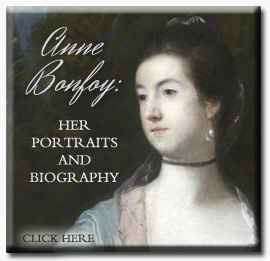  | Eliot, Anne (I00229)
|
| 871 | 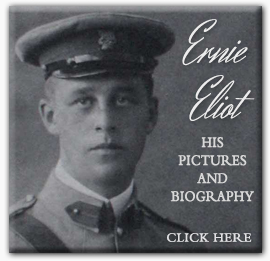 | Eliot, Arthur Ernest Henry (I00231)
|
| 872 | 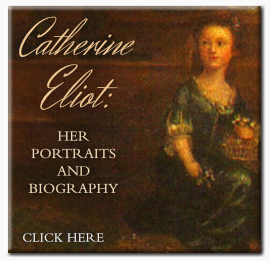 | Eliot, Catherine (I00240)
|
| 873 | 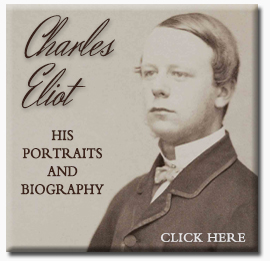 | Eliot, Charles George Cornwallis (I00241)
|
| 874 |  | Eliot, Christian Edward Cornwallis (I00243)
|
| 875 | 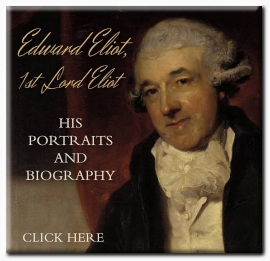 | Eliot, 1st Baron Eliot, Edward Craggs (I00250)
|
| 876 | 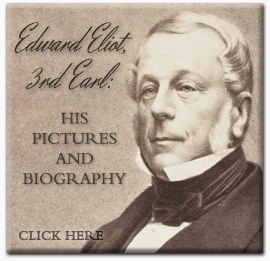 | Eliot, 3rd Earl St. Germans, Edward Granville (I00251)
|
| 877 | 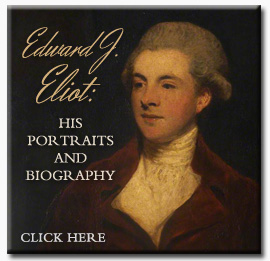  | Eliot, Edward James (I00001)
|
| 878 | 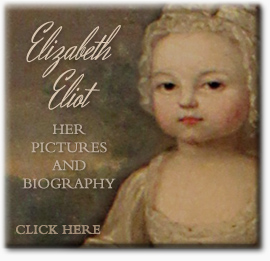 | Eliot, Elizabeth (I00257)
|
| 879 | 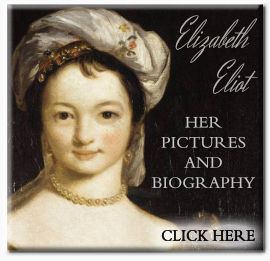 | Eliot, Elizabeth (I00256)
|
| 880 | 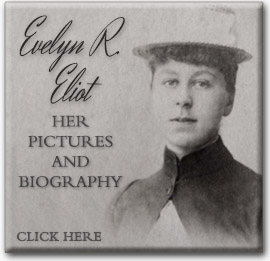 | Eliot, Evelyn Radigund (I00264)
|
| 881 | 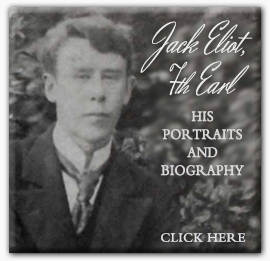 | Eliot, 7th Earl St. Germans, Granville John (I00271)
|
| 882 | 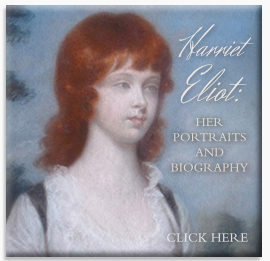 | Eliot, Harriet Hester (I00272)
|
| 883 | 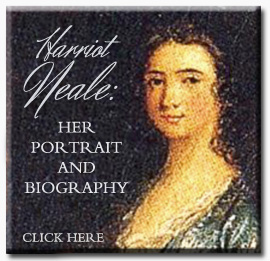  | Eliot, Harriot (I00273)
|
| 884 | 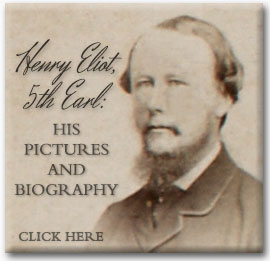  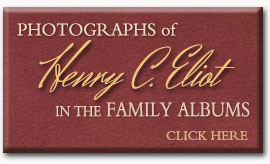 | Eliot, 5th Earl St. Germans, Henry Cornwallis (I00274)
|
| 885 |  | Eliot, John (I00284)
|
| 886 | 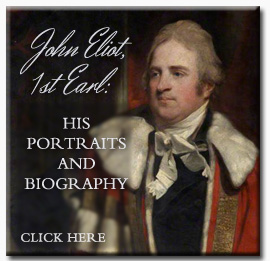  | Eliot, 1st Earl St. Germans, John (I00283)
|
| 887 | 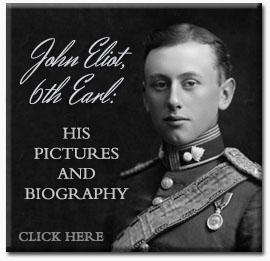 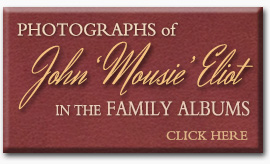 | Eliot, 6th Earl St. Germans, John Granville Cornwallis (I00292)
|
| 888 | 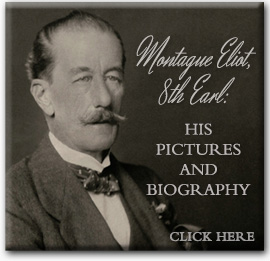 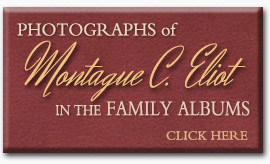 | Eliot, 8th Earl St. Germans, Montague Charles (I00300)
|
| 889 | 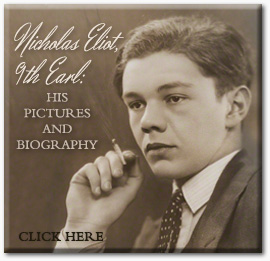 | Eliot, 9th Earl St. Germans, Nicholas Richard Michael (I00303)
|
| 890 | 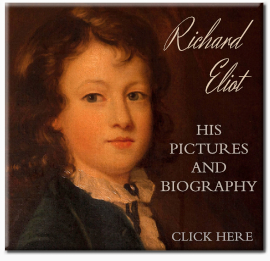 | Eliot, Richard (I00308)
|
| 891 | 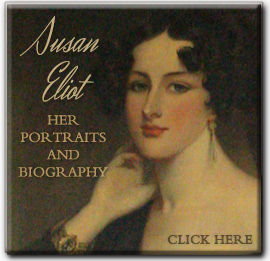 | Eliot, Susan Caroline (I00320)
|
| 892 | 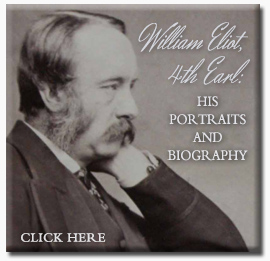 | Eliot, 4th Earl of St. Germans, William Gordon Cornwallis (I00333)
|
| 893 | 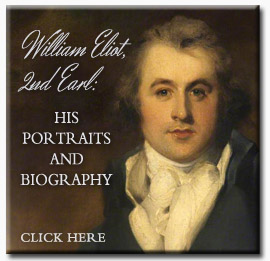  | Eliot, 2nd Earl St. Germans, William (I00329)
|
| 894 | 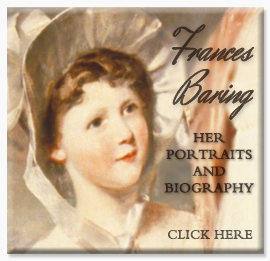 | Baring, Frances "Fanny" (I01464)
|
| 895 | 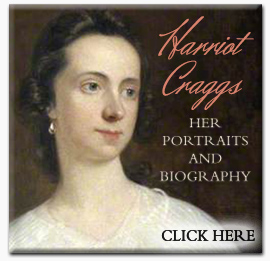 | Craggs, Harriot (I00181)
|
| 896 | 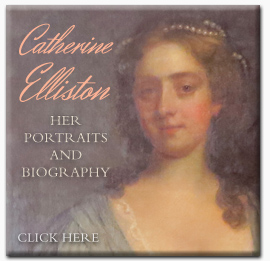 | Elliston, Catherine (I00337)
|
| 897 | 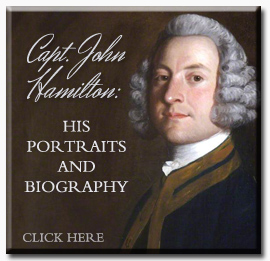   | Hamilton, John (I00439)
|
| 898 | 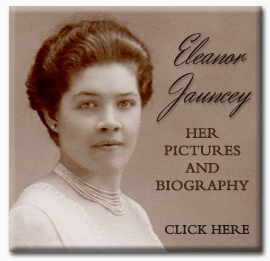 ---- "The Times" 5 September 1890, Page 1: Births. On the 3d Sept, at Cheriton, Beulah-hill,the widow of the late Commander H Hastings Jauncey, RN, of a daughter. --- "The Times" 11 January 1986, Page 26: Jauncey. On 10th January, peacefully at Dalginross House, Comrie, Eleanor Violet, in her 96th year, only daughter of the late Commander Henry Hastings Jauncey, Royal Navy. Funeral in St James Church, Muthill, 3pm Monday 13th January. Family flowers only. | Jauncey, Eleanor Violet (I00489)
|
| 899 | 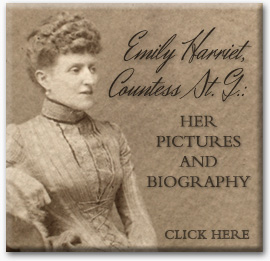  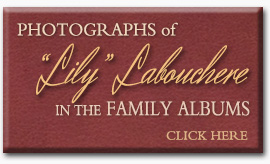 | Labouchere, Countess St. Germans, Emily Harriet (I00515)
|
| 900 | 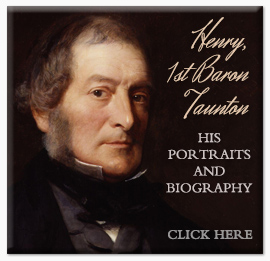 | Labouchere, 1st Baron Taunton, Henry (I01463)
|
| 901 | 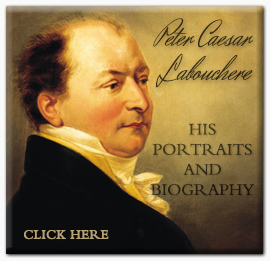 | Labouchere, Peter Caesar (I01857)
|
| 902 | 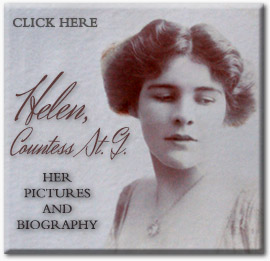 | Post, Countess St. Germans, Helen Agnes (I00738)
|
| 903 |  | Pitt, William (I00694)
|
| 904 | 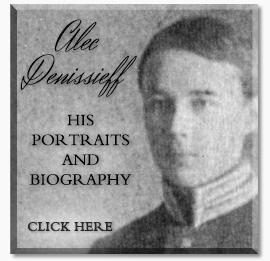 | Denissieff, Alexander (I00211)
|
| 905 | 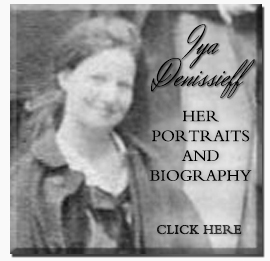 | Denissieff, Iya (I00213)
|
| 906 | 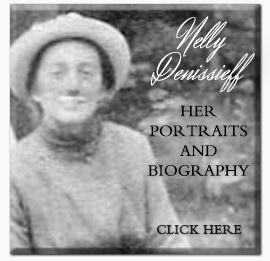 | Denissieff, Elena Helene (I00212)
|
| 907 | 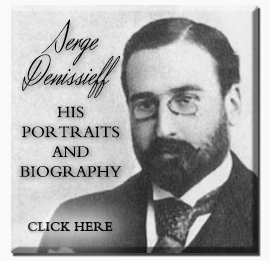 | Denissieff, Sergey Fedorovich (I00216)
|
| 908 | 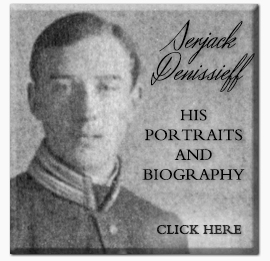 | Denissieff, Sergei Sergeyevich (I00215)
|
| 909 | 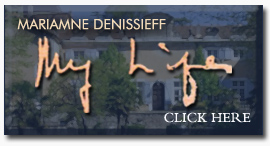 | Denissieff, Mariamne (I00214)
|
| 910 | 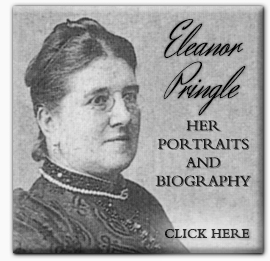 | Pringle, Eleanor Hester Mary (I00754)
|
| 911 | 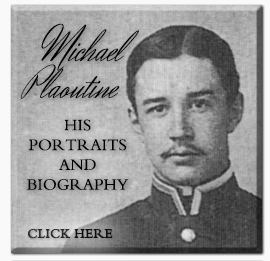 | Plaoutine, Michael Sergeyevich (I00698)
|
| 912 |  | Plaoutine, Lieut-General Sergei Nikolaevich (I00704)
|
| 913 | 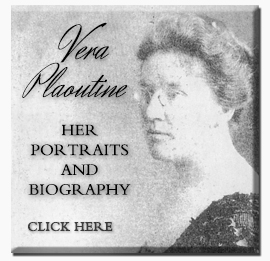 | Plaoutine, Vera Sergeyevna (I00705)
|
| 914 | 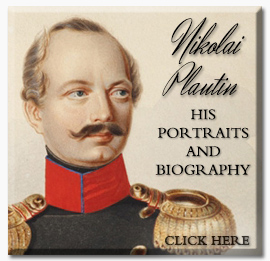 --- https://vichuga-hronos.livejournal.com/54753.html Николай Фёдорович Плаутин (1794—1866) — уроженец Писцово, выдающийся военачальник и государственный деятель Российской империи; генерал от кавалерии (1856), генерал-адъютант (1949), член Государственного Совета (с 1862), военный реформатор (1856-1862); кавалер всех российских орденов. Был непосредственным начальником М. Лермонтова по службе (1839-1840). Именно Плаутин укладывал в гроб Александра I и божился сыну перед смертью, что это был именно царь. Николай Плаутин входил в ближний круг Николая I. [Google Translation of the above.] Nikolai Fyodorovich Plautin (1794-1866) - a native of Pistsovo, an outstanding military leader and statesman of the Russian Empire; general of the cavalry (1856), adjutant general (1949), member of the State Council (from 1862), military reformer (1856-1862); Chevalier of all Russian orders. Was M. Lermontov's immediate superior in service (1839-1840). It was Plautin who put Alexander I in the coffin and swore to his son before dying that it was the tsar. Nikolai Plautin was a member of the inner circle of Nicholas I. | Plautin, Lieut-General Nikolai Fedorovich (I00714)
|
| 915 | 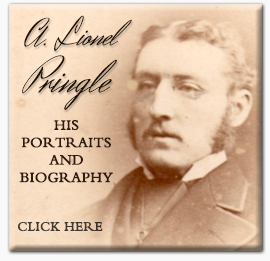 | Pringle, Alfred Lionel (I00745)
|
| 916 | 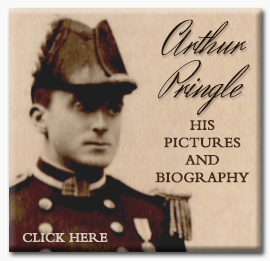 | Pringle, Arthur (I00748)
|
| 917 | 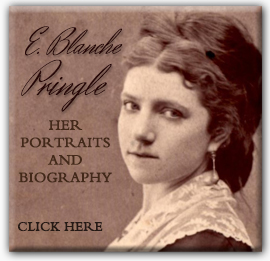 | Pringle, Edith Blanche (I00752)
|
| 918 | 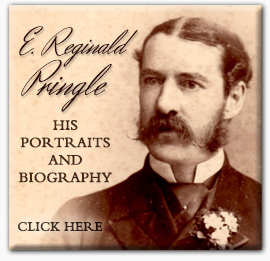 | Pringle, Edward Reginald (I00753)
|
| 919 | 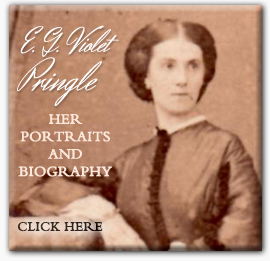 | Pringle, Emily Georgiana Violet (I00758)
|
| 920 |  | Pringle, Eliot Victor (I00756)
|
| 921 | 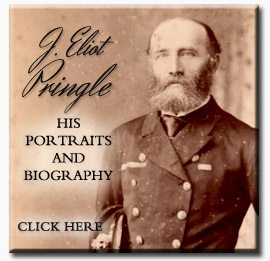  | Pringle, Rear-Admiral John Eliot (I00763)
|
| 922 | 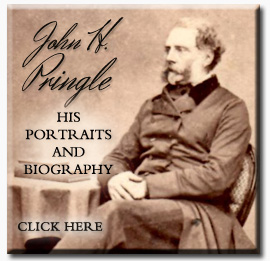  | Pringle, John Henry (I00764)
|
| 923 |   | Pringle, William Henry Wilbraham (I00771)
|
| 924 |  | Plaoutine, Nikolai Sergueevitch (I01270)
|
| 925 |  | Avxentievna, Ekaterina (I01430)
|
| 926 |  | Plautin, Anna Avtamonovna (I01440)
|
| 927 |  | Plautin, Anna Fedoryevna (I00706)
|
| 928 |  | Plautin, Avtamon Matveevitch (I01438)
|
| 929 |  | Plautin, David Mikhailovitch (I01445)
|
| 930 |  | Plautin, Egor Sergeyevitch (I01431)
|
| 931 |  | Plautin, Elisaveta Egorovna (I01432)
|
| 932 |  | Plautin, Elisaveta Sergeyevna (I01448)
|
| 933 |  | Plautin, Fedor Sergeyevitch (I00708)
|
| 934 |  | Plautin, Fedor Sergeyevitch (I01449)
|
| 935 |  | Plautin, Feodor Vladimirovitch (I01442)
|
| 936 |  | Plautin, Gavrila Vladimirovitch (I00709)
|
| 937 |  | Plautin, Klementi (I01446)
|
| 938 |  | Plautin, Matvei Vladimirovich (I01437)
|
| 939 |  | Plautin, Michael George "Mischa" (I00711)
|
| 940 |  | Plautin, Mikhail Fedorovich (I00713)
|
| 941 |  | Plautin, Mikhail Gavrilovitch (I01434)
|
| 942 |  | Plautin, Mikhail Vladimirovitch (I01443)
|
| 943 |  | Plautin, Peter Fedorovich (I00715)
|
| 944 |  | Plautin, Anna Sergeyevna (I01447)
|
| 945 |  | Plautin, Ekaterina Sergeyevna (I01455)
|
| 946 |  | Plautin, Nadezhda Sergeyevna (I01451)
|
| 947 |  | Plautin, Platon Sergeyevitch (I01452)
|
| 948 |  | Plautin, Sergei Fedorovich (I00716)
|
| 949 |  | Plautin, Sergei Gavrilovitch (I00717)
|
| 950 |  | Plautin, Varvara Sergeyevna (I01450)
|
| 951 |  | Plautin, Vera Sergeyevna (I00718)
|
| 952 |  | Plautin, Vladimir Matveevitch (I01436)
|
| 953 |  | Plautin, Vladimir Mikhailovitch (I01441)
|
| 954 | "Whether driving to Port Eliot or coming by train it is not until you get within 100 yards of the House and Park that you have any idea that such a beautiful place exists. The undulations of the country side with the twists and turns of the estuary make this place invisible from any public highway or foot path. The site has been occupied for more than 1000 years. The first 500 plus years by God and half the millennium by the Eliots!" Peregrine St Germans • Eliot. – On January 2nd, at Willingdon Hospital, Lahore, India, to Helen, wife of Captain Nicholas Eliot, the D.C.L.I., of Port Eliot, St. Germans, Cornwall, a son. • https://www.telegraph.co.uk/obituaries/2016/07/17/the-earl-of-st-germans--obituary/ The 10th Earl of St Germans, who has died aged 75, enjoyed all the attributes that the popular press expects of the aristocracy - a distinguished lineage, burdensome inheritance, family tragedy and personal eccentricity that flirted with Byronic dissolution. A central figure in the dalliance with the counter-culture by members of the peerage that began in the 1960s, Lord St Germans personified a certain brand of rakish hippiedom thereafter. Yet he did not allow his fondness for relaxed social norms to compromise a near-feudal grip on his family estate in south-east Cornwall, whose preservation he helped to assure. His "Elephant Fayre", a festival that took place for a number of years on the Port Eliot estate, attracted some 10,000 revellers, travellers and devotees of the New Age, initially free of charge. The festival took its name from the beast that is the Eliot family's crest, and until the Fayre's demise in the late 1980s one of its prime attractions was a giant wooden elephant. Its howdah could be reached by a ladder concealed within the elephant's hollow core. In 2003 Elephant Fayre was updated and succeeded by the Port Eliot Lit Fest, an eclectic cultural fiesta with a flavour of Boden-wearing Bohemianism that became a great success, chiefly as a result of the energy and public relations skills of his third wife Cathy Wilson. It combines music and book festival activities with catering by fashionable restaurateurs, cocktail-making classes and wellbeing-focused pursuits such as stargazing, Tibetan chanting and foraging rambles. A luxury yurt can be rented for £1,300. Peregrine Nicholas Eliot was born on January 2 1941, the only son of the 9th Earl of St Germans, an engaging eccentric known for his devotion to the turf and the nature of his early livelihood as the "Bookie Peer". He listed his recreations in Who's Who as "huntin' the slipper, shootin' a line, fishin' for compliments"; his son, Perry, streamlined his fun to "mucking about". The Eliots established themselves in Cornwall in the mid-16th century with the purchase of the former Augustinian Priory of St Germans and built their seat at Port Eliot, bordering the Tamar estuary. The house has a park landscaped by Repton, a round room and stables by Soane and a kitchen some 350ft from the dining room; the kitchen also possesses a steam-driven cherry-stoner. Edward Eliot, MP for Cornwall, was created Baron Eliot in 1784, with the earldom being conferred on his son in 1815. His six successors in the 20th century enjoyed turbulent fortunes. The heir of the 5th Earl committed suicide in the house in 1909 during a village cricket match; his body was found when he missed his turn to bowl. The 6th Earl died following a point to point fall, the 7th was incarcerated in a lunatic asylum, while the 8th, Peregrine Eliot's grandfather, was a courtier described as "having all the stiffness of a poker, with none of its occasional warmth". Young Perry had a troubled childhood. His parents divorced when he was six, and his mother died when he was 10. His father thereafter spent much of his time in Tangiers, and Perry and his sister were largely brought up by their grandparents and a strict Victorian nanny. He was educated at Eton, where, he later recalled, "I failed quite spectacularly, even with the assistance of the birch, to take advantage of some of the best teachers in the land"; he came bottom of the school's academic table. His father made over the 6,000-acre Port Eliot estate to Perry in 1958, and on succeeding as 9th Earl in 1960 changed his telegraphic address in Tangiers to "Earls Court". Peregrine, now Lord Eliot, was hit particularly hard when his grandmother, to whom he was close, killed herself shortly afterwards. The young Lord Eliot gave himself fully to the spirit of the 1960s. He travelled, driving to India in a Volkswagen Beetle and to Tangiers on a vintage motorcycle (named Veronique) which he customised with sand filters and an ivory gear stick; he afterwards became vice-President of the Harley-Davidson Riders' Club of Great Britain. He was accompanied on an expedition to the Atlas mountains in search of the domestically extinct Cornish chough by the explorer Robin Hanbury-Tenison. On another occasion, on a whim, he walked from Port Eliot to London. In the late 1960s, Lord Eliot and two friends secured the franchise to market all the Beatles' merchandise, but in the end he did not make any money out of it. However, his interest in rock music - and the alternative lifestyle that accompanied it - persisted; he was a regular attender at the Glastonbury pop music festival and a great friend of Michael Eavis. "It is futile to recall anything about the festival," he reflected, "especially if the whole thing's done on acid." He found it equally futile to discuss the pleasures of hallucinogens with non-initiates, comparing it to explaining the rules of tennis to a crustacean. Perry Eliot passed his enthusiasm for music on to his second son, Louis, the lead singer with the pop band Rialto. Lord Eliot was interested in all forms of art. For a time he ran the Elephant Press from the gatehouse at Port Eliot, and gave board for almost a decade to his friend the poet Heathcote Williams. He also commissioned a vast mural (documenting his life) for Sir John Soane's great round room at Port Eliot. The artist, Robert Lenkiewicz, had hitherto been best known for making use in an earlier work of the mummified corpse of a down-and-out he had befriended in Plymouth. Another of Lord Eliot's additions was the construction of a maze more than usually influenced by the legend of Theseus; it is said to have the head of a bull buried at its centre. This was the latest in a series of peculiar additions to the landscape of Port Eliot. The 8th Earl had a sundial bearing the legend "No man knoweth the hour" built for the walled garden, but put it on the north side, where the sun never shines. Peregrine Eliot succeeded to the earldom on his father's death in 1988. Thereafter, when his name appeared in the press, it was accompanied increasingly by farce and tragedy. In 1964 he had married the siren beauty Jacquetta Lampson, daughter of the 1st Lord Killearn, who as Sir Miles Lampson had been Ambassador to Egypt during the Second World War. Jacquetta later attracted notoriety by posing for nude studies by her friend, the artist Lucian Freud. She and Perry Eliot had three sons, but then separated; their protracted divorce was not concluded until 1989. Three years later, the Earl married his girlfriend Elizabeth Williams, but those close to him did not take to her. The staff at Port Eliot had T-shirts printed with the legend "It was better with Jacquetta", while the Earl's sister, Frances, Countess of Shelburne, told the prospective Countess of St Germans that she was not good enough to marry into the family. That comment came out in court when Elizabeth Williams was arrested for driving the wrong way down a one-way street; she said that she had done so after having a drink to get over the Countess's remark. She and the Earl separated soon after their marriage and were divorced in 1996. Shortly before, Lord St Germans sold to the Getty Museum for £5 million one of the last Rembrandts left in private hands, Daniel and Cyrus before the Idol of Bel. His companion for some years was the shoe designer Emma Hope. Since being forced as a child to attend Pony Club he had had a strong dislike of horses, but relaxed his ban on them on the estate to allow her to stable her hunter, Flash, at Port Eliot. Latterly he hosted lawn meets for the East Cornwall Hunt and established a now successful one-day equestrian event. He was also strong-willed and provocative, and in 1998 an industrial tribunal found that he was wrong to have had his housekeeper sacked when she took time off after having hurt herself cleaning his family silver. He had an intense temperament given to brooding, a condition not alleviated by the emphysema which he endured for much of the 1990s; in 1997 Emma Hope persuaded him to have a lung transplant. His newly transformed life, he wrote in The Daily Telegraph, amounted to "a miracle". An accomplished prestidigitator who could weave a coin across his fingers, Lord St Germans had first suffered from respiratory problems when touring America as a magician. Sharing a hospital room with an Indian chief, he had been kept awake by chanting squaws. He had chosen the site of his grave some years ago, a meadow that afforded his favourite view of the estate. In 2005 Lord St Germans married Catherine Wilson, formerly style editor of the Daily Telegraph Magazine. She survives him with two of the sons from his first marriage. His eldest son, Jago, a former surfing champion of Spain, died in 2006; Jago's young son Albert (Albie) succeeds to the earldom. • http://porteliotfestival.com/peregrine-st-germans/ Everybody at Port Eliot is sad beyond measure at having to confirm that Peregrine, Lord St Germans, passed away on the afternoon of Friday 15 July. Peregrine died after a short illness following surgery for cancer. Peregrine loved Port Eliot, the festival and the Elephant Fayre that preceded it, and made clear that he wanted this year's festival to go ahead with instructions that it should be the best ever. So, we are more determined than ever that that is what it will be. (Posted on July 17, 2016) • http://announcements.telegraph.co.uk/deaths/204784/st-germans Telegraph.co.uk Announcement (20 Jul 2016) Peregrine, 10th Earl of St Germans, died on 15th July 2016, aged 75. Much loved husband of Catherine, father of the late Jago and of Louis and Francis. Funeral to be held on Tuesday 26th July at 2.30 p.m. at St Germans Priory Church, St Germans, PL12 5NP. (Family and friends welcome). • http://www.plymouthherald.co.uk/sombre-funeral-for-a-colourful-aristocrat/story-29553518-detail/story.html Sombre funeral for colourful Earl of St Germans By WMNKRossiter | Posted: July 26, 2016 The Bohemian Perry Eliot might have been surprised to see so much black. His was a life was lived in full colour. The 10th Earl of St Germans was buried yesterday on his beloved Port Eliot estate after an emotional funeral service at St Germans Priory Church. Hundreds of mourners came from the village in South East Cornwall and from around the world to celebrate his life. Many will stay on for the Port Eliot literary festival, which begins tomorrow in the grounds of his estate. Thursday Lord Eliot's original "Elephant Fayre" festival attracted thousands of revellers, and New Age travellers in the 1980s. In 2003 it was reborn as the Port Eliot Festival, a cultural fiesta that became a great success, chiefly as a result of the skills of his widow Catherine. Peregrine Nicholas - Perry to his friends - Eliot leaves a widow, his third wife Catherine, whom he wed in 2005, and sons Louis and Francis. His eldest son and heir Jago died in 2006 and the estate will pass to his 11-year-old grandson Albert, who paid a brave and moving tribute in the funeral service. Albert, who becomes the 11th Earl of St Germans, recounted holidays spent at Port Eliot and the wonderful stories told by his grandfather. "We love our Grandad," he said. The Countess of St Germans read the poem "The Love that I have", by Leo Marks. Lord Eliot suffered from ill health, and needed a kidney transplant a few years ago. His son Louis thanked the man who donated the kidney, Jo Lanyon, for the extra years of life. Lord Eliot's son Francis said: "No matter how stressful his life was, he knew that the peace of Port Eliot was his birthright. "There were very few rules in Dad's court - shut the doors, show up to meals in shoes, put records back in their sleeves and have as much fun as possible." His father would send him upstairs to get ready for bed while he "sat in a chair and smoked a joint to the music of the Rolling Stones". The service was conducted by the Revd Michael Goodland, and the Duke of Cornwall was represented by the Marquis of Lansdowne, who read from Ecclesiastes Chapter 2, Verses 1-8 and 22, "To everything there is a season and a time to every purpose under the sun...." Sir Richard Carew Pole reflected on "the life of a very exceptional man". He said their families had been neighbours for centuries. "He didn't do stress," he said. "One of his listed recreations was 'sitting still'." He described how, when Peregrine took over Port Eliot from his grandfather at the age of 21, "suddenly the house was full of young people". The East Cornwall Bach Choir sang A Whiter Shade of Pale, Air on a G String, and The Cloud-Capp'd Tow'rs and the bellringer was Shaun Turner. | Eliot, 10th Earl St. Germans, Peregrine Nicholas (I00304)
|
| 955 | A member of the Inns at Court. --- "The Gentleman's Magazine" Vol. 82, 1797, page 915ff, 1104ff: . . . and seven daughters, Dorothy, Anne, Elizabeth, Martha, Ursula, Margaret and Jane, all baptized at Westcliffe between 1649 and the 7th of January 1665. But neither tradition nor my researches enable me to trace their father or them any lower. --- "The Gentleman's Magazine" 1788, Vol. 63, pages 698-702: There are no further traces [of this family] in the parish registers of this place. | Gibbon, Thomas (I116)
|
| 956 | A physician. He had daughters, Anne and Elizabeth. | Gibbon, Richard (I123)
|
| 957 | A renowned Classical scholar, after the family escaped from Russia, he settled in France and did much work and documentation on the Greek Vase collection at The Louvre. He and his mother lived together in a house in Paris, struggling to make ends meet financially. During WWII, he went to Brest and worked at a Maritime Company. While there, he died of influenza. (His death is often attributed to kidnap/capture by the Germans and mistreatment/starvation.) ---------------------------------------------------------------------------------------------------------------  | Plaoutine, Nicholas Nikolaevich (I00699)
|
| 958 | A very nice article documenting her life and times can be seen here: https://medium.com/@simonspat73/following-the-threads-reconstructing-the-life-of-daisy-blossom-elkan-1876-1966-a811546aeba4 "The Times" 08 Jan 1965, page 1: Eliot. - On January 7th, 1965, at Tunbridge Wells, Daisy, widow of Lt.-Col. the Hon. Christian Edward Cornwallis Eliot, O.B.E. No flowers. Cremation private. "England & Wales Government Probate Death Index" on FMP: Eliot the honourable Daisy Blossom of Lonsdale Nursing Home Lonsdale Gardens Tunbridge Wells died 7 January 1965 Probate London 8 March to Philip Brian Martineau and Norman Sidney Layland Smart solicitors. £20,466 | Elkan, Daisy Blossom (I01373)
|
| 959 | ACAD A Cambridge Alumni Database, Source Medium: Internet . | Source Source: S00001 (S00001)
|
| 960 | Aged 3 Months at time of burial. | Lee, Henry (I00519)
|
| 961 | All Souls Cemetery, Kensal Green, Kensington, London (Plot 16013 / Square 33 | Samo, Harriet Sara (I00834)
|
| 962 | All Souls Cemetery, Kensal Green, Kensington, London (Plot 16013 / Square 33 | Waller, James Waller Samo (I00972)
|
| 963 | Andrews Newspaper Index Cards, 1790-1976: SMITH : PLAOUTINE. --- On Dec. 15, 1945, very quietly, at the Parish Church of St. Paul, near Penzance, Cornwall, by the Rev. W.V. Wagner, Lieut. Robert Alexander Smith, R.N.V.R., younger son of Sir Robert Smith, Bt., and Lady Smith, of Crowmallie, Pitcaple, Aberdeenshire, to Mariamne (nee Denissieff), widow of George Plaoutine, of Philippeville, Algeria. | Family F00200
|
| 964 | Arrested (with her mother, brother, sisters and aunt) at her home in Mitino on 14 May 1921. Shot the following morning on charges of belonging to a "criminal counter-revolutionary organization." --- Memories of Irina by her cousin, Prince Alexei Scherbatov: These were written in his book (translated "The Right to the Past", pages 193-5) and have been published online in a number of articles. This is an online translation of the Russian and is quite literal. As with all memoirs dealing with the Russian Revolution, Prince Alexei knew only what he heard about this event. Consequently, some of these facts are not correct or disagree with other writings --- but in all memories and tellings there is a grain of truth! Also, he knew them personally and remembered personal character traits which are invaluable. This particular translation was taken from: http://magazines.russ.ru/nj/2003/233/sherbat.html "In Smolensk, my family members were shot: my cousin Irina was 17 years old, my cousin Dmitry was 14 years old, my uncle Sergey Borisovich Shcherbatov with his wife Elizaveta (nee Plautina) and an aunt, Princess Khovanskaya. Her line after this "purge" ceased. I wrote down all the coordinates, but I did not immediately tell anyone. I arrived the next day alone, opened the first box, there were about 20 tons of documents. I did not get the Shcherbatov case, but it was supposed to be there. I doubt that I could find him alone. But here, one might say, was lucky: Alexander von Engelhardt helped me. From him I learned the history of the archive and details of the shooting of my family. .. . The Cheka began to operate from the end of 1917. The former gendarmes and policemen, nobles, merchants and priests, cadets, schoolboys, students were exterminated. [The Cheka] shot not only adults but also children. "The Shcherbatov case" was found in documents for 1921: arrest, interrogation, sentence to be shot. Uncle's wife, who was very fond of Russia, was a half-English woman, and the reason for the arrest with the wording "English spies" was the family's affection for the English language. Something I was enchanted by Engelhardt, who himself interrogated my relatives: "Irina's cousin, she seemed to be afraid of nothing. She said: "I hate you. You are traitors to my homeland. " She was shot the next morning. . . . And I remember Irina. Last time we met in Petersburg, she was then 15-16 years old, I was 6 or 7. Very beautiful and affectionate, always took me in her arms and kissed my head. I had such a special feeling for her. Uncle Sergey, a well-known artist, loved his estate near Smolensk, not far from the Goat Hills, and did not want to leave it. Alexander Engelhardt gave them out as "British intelligence officers". In the Goat Hills, with the shooting of my relatives, the GPU cemetery began, where five thousand Polish officers were destroyed many years later." --------------------------------------------------------  | Stcherbatov, Irina Sergeyevna (I00893)
|
| 965 | Baptism records dates for birth, named, christening. Edward Cotton was named on 28 Nov 1804. | Cotton, Edward (I172)
|
| 966 | Cambridge University Alumni Record. | Source Source: S00013 (S00013)
|
| 967 | Classmate at Military Cavalry School of his future brother-in-law, Count Plato Alexandrovitch Zubov. Fell seriously ill after his sister's marriage to Zoubov and was sent for two years to Italy, where he rested for his health and had singing training. --- From the notes of Serge Plaoutine: He was a State Councilor. He had, in 1860, 148 serfs on 1,350 hectares in Pistchevo d. Yourievetz. He married Evdekia Erimovna Iakoutine (born: 1852; died: 1933 in Berlin). She had been married first to a M. Sosnine. | Plautin, Fedor Sergeyevitch (I01449)
|
| 968 | Copied from Documents in the possession of the Right Honorable the Earl of St. Germans, Genealogical Memoranda relating to the families of Eliot of Port Eliot and Craggs of Wyserley (Taylor and Company, London 1868), Source Medium: Internet . | Source Source: S00005 (S00005)
|
| 969 | Could not find a baptism record for her after browsing through the scanned register. | Gibbon, Ann (I72)
|
| 970 | Daughter of John Walter of Elberton, Somersetshire. | Walter, Mary (I95)
|
| 971 | Deceased at the time of her father's will codicil. | Elliston, Elizabeth (I49)
|
| 972 | Died an infant. | Gibbon, Percival (I125)
|
| 973 | Died an infant. | Gibbon, John (I126)
|
| 974 | Doctor of Divinity. "Hampshire Chronicle" 16 Feb 1778, page 3: Last week died, in London, the Rev. Dr. Eyre, of Botly, near this city, who was the last survivor of that most respectable family. We hear he has left his whole fortune, being very considerable, amongst his nephews and nieces, children of the late Mr. James Serle, of this city. | Eyre, Rev. Dr. Richard (I01257)
|
| 975 | Doctor of Maidstone, listed as M.D. | Smith, Thomas (I110)
|
| 976 | EL/B/3/1/11 Letter, Mrs Hamilton, Suffolk Street, to Edward Eliot 23 Aug 1751 She complains that his letter took a long time to arrive. She is pleased that Nancy likes Mr Bonfoy, and that Ham [Mr Hamilton] says he is a 'Man of strict honour, just generous, and good natured'. He has been with them at Town, as well as Betsey and John. John and Kitty are travelling with her to Gosfield, and Mrs Booth is taking Betty with her for 'the remainder of the Holydays.' | Family F00045
|
| 977 | Family notes say that Elizabeth died of starvation during WWII, either in 1942 or 1943. She was married, but her husband had died in 1937. | Stcherbatov, Elizabeth Sergeyevna (I00889)
|
| 978 | Family notes say that she married, lived some years with her youngest sister, and died in the 1980s. | Stcherbatov, Marie Sergeyevna (I00901)
|
| 979 | FindaGrave.com. | Source Source: S00015 (S00015)
|
| 980 | First daughter of Thomas and Alice. | Gibbon, Mildred (I104)
|
| 981 | Godson of Hugh Awdeley, his great-uncle. | Bonfoy, Nicholas (I11)
|
| 982 | He died young. | Gibbon, Philip (I122)
|
| 983 | He was an artist, no evidence of political position during his life. He suffered great mental stress when he saw a crowd going to kill a landowner during the first Russian revolution of 1905. For some time before his death, he lived in a Mental Hospital. | Stcherbatov, Sergei Borisovich (I00913)
|
| 984 | He was apprenticed on 12 Feb 1748/49 to Benjamin Pugh, an apothecary in Chelmsford, Essex. He was a surgeon in London. | Chapman, Elliston (I00111)
|
| 985 | His birthday listed is the Russian Day. --- From the notes of Serge Plaoutine: Mortally wounded at the retreat at Odessa. --- Translated from: http://tsarselo.ru/yenciklopedija-carskogo-sela/istorija-carskogo-sela-v-licah/plautiny.html Mikhail Nikolaevich Plautin was born in 1895 in Tsarskoye Selo. Misha was interested in birds since childhood. From a young age, he began to collect a collection of bird eggs. A huge influence on the boy had his two grandfathers, passionately carried away by natural science. As a child, Misha and his brothers spent the winter in Tsarskoe Selo, and the summer in Tesseli in the Crimea. His mothers also belonged to the estates Sadovka and Kamenka in the Novokhopersky district of the Voronezh province. Perhaps Misha was there. In 1913, Mikhail entered the St. Petersburg Institute of Engineers of Communications of Emperor Alexander I. The following year the Great War began, which grew into the Civil War. He was not called to the front after the beginning of the war, because as a student he received a reprieve from the draft. When the Ornithological Herald published his proposal for the exchange of eggs in 1915, Mikhail Nikolayevich was only 20 years old. The noble lineage of the Plautins and the immediate service in the Tsar's entourage left no choice. The question "for whom to fight in the Civil" did not stand. The widow Maria Mikhailovna, along with her sons, left the Motherland through Odessa in 1920. As is now known, this was one of the heaviest and poorly organized and prepared evacuations of the White armies. In the end, only one in three of the total number of applicants was able to be evacuated. Mikhail Nikolaevich Plautin was mortally wounded in 1920 when Odessa left, and remained forever in his native land. He was only 25 years old! The rest of the family could successfully emigrate. The fate of the ornithological collection of Mikhail Nikolayevich Plautin remains unknown. ---------------------------------------------------------------------------------------------------------------  | Plautin, Mikhail Nikolaevich (I00712)
|
| 986 | His was the only memorial remaining in the church at Westcliffe at the time of the writing of "The Gentleman's Magazine" 1788, Vol. 63, pages 698-702. "Here lyeth the body of Matthew Gibbon, the Elder, son of Thomas Gibbon. He deceased the 12 October 1629, aged 72." Parish register reads: "His widow Isabel (Austen, whom he married in 1584) was buried June 3rd 1648, aged about 90. | Gibbon, Matthew (I137)
|
| 987 | It is believed by many that Dmitry Scherbatoff escaped from captivity (through the help of servants and/or friends) after his family was arrested in 1921. That he fled to Siberia and changed his name to Vasily Kuzmich Shcherbakov, becoming a brilliant scientist and teacher, hiding his origins for sixty years while claiming to have been born in Ujeka Yenisei Provence as "a peasant" -- only revealing his true identity to his wife and children shortly before his own death in 1981. Some branches of the family believe this to be true while others believe that he died with his mother and sister in Smolensk. I am including the wife and sons of Vasily Shcherbakov here for ease of research. To see some more information about this line, follow the link in the first source below.  | Stcherbatov, Dmitry Sergeyevich (I00888)
|
| 988 | Kensal Green Cemetery (Plot 27248 / Square 33 | Pringle, Mary Georgiana (I00766)
|
| 989 | Kensal Green Cemetery, London (Plot 16013 / Square 33 | Lewis, Eric Waller (I00536)
|
| 990 | Listed as Rev. Thomas Williams in his brother-in-law Edward's will, written 09 Jan 1745. Deceased by February 1812 (admon attached to Edward Elliston's will), having died intestate. --- "A History of the County of Brecknock", Theophilus Jones, 1809: "On the same wall [eastern pine end wall], northward, a marble monument records the interment of Esther Elliston of London, spinster, who died November 10, 1737, aged 37, and of Elizabeth Elliston, her sister, who died May 1757, aged 55. Argent, an eagle displayed sable. Still nearer to the churchyard, another marble monument to the memory of Henry Williams of this town, gent., obiit 1736, aet. 74; Johanna ejus Uxor, obiit 1731, aet. 66; Thomas Williams, clerk, (late vicar of Brecon) obiit 1787, aged 89, Catherine (Elliston) his wife, 1752, aged 46; Edward Williams, gent. in ---------, aged 51, and Joan, his wife. Arms, quarterly 1st and 4th, Cradoc ap Gwilym 2d and 3d, gules, 3 castles triple towered proper, impaling Elliston." | Williams, Rev. Thomas (I66)
|
| 991 | Listed as the late Dean of Carlisle in his mother's will, written on 30 Jul 1718. | Gibbon, Thomas (I70)
|
| 992 | Listed as Thomas Abrahall of Barking. | Abrahall, Thomas (I77)
|
| 993 | Listed in her husband's will: "Whereas I have for many years lived and cohabited with Mrs. Rachael Moore otherwise Batson, as my wife and leave by her two sons . . . and three daughters . . ." Buried as Mrs. Rachel Batson, aged 75 years. | Moore, Rachael (I181)
|
| 994 | Living at the time of his father-in-law's will codicil. | Drew, Joseph (I50)
|
| 995 | Long-time personal friend and doctor to the family of Edward Granville Eliot, 3rd Earl St. Germans, and Lady Jemima Cornwallis. --- 1841 census for Langley Grange Farm shows only Alice (aged 55, listed as Farmer) with Thomas (25), William (17), Emily (25), Harriet (19) and Ann (12). * Father was a farmer. --- Morning Post, 29 Apr 1907, page 2: MR ALFRED BURTON, surgeon, of Park-place, St. James, and late of Dover-street, died on March 26, leaving a fortune of £52,108. He gave £2,000 each to his brothers Thomas and Henry, £1,500 to his brother William, £2,500 to his sister Harriet Elizabeth Ansted, £1,500 to his sister Emily Maria Leeds, £500 and the income from £10,000 to his sister Ann Mary Burton, £2,000 to his nephew Edward Ansted, £2,000 to the children of his brother Henry, £2,500 to his niece Mary Ansted, £1,500 to the children of his brother Thomas, and the residue to his nephew Alfred John Ansted. ("Clifton Society" 04 Apr 1907, page 6) The funeral of Dr. Alfred Burton, Park-place, St. James's, took place on Saturday. The first part of the service was performed at St. James's Church, Piccadilly, and the interment at Brompton Cemetery. Among those who attended were the Earl and Countess of St. Germans, Lord Eliot, the Hon. John Eliot, the Dowager Countess of Bessborough, Lady May Ponsonby, the Countess of Bessborough, Lady Oranmore and Browne, Viscount Downe, the Hon. Henry and Mrs. Molyneux, the Hon. Mrs. Charles Eliot and the Misses Blanche and Evelyn Eliot, the Hon. Arthur Ponsonby, the Hon. Walter Ponsonby, Major Speed, Mr. Montague Guest, Mr. J. Congreve, Mr. and Mrs. Ansted and Mr. Alfred Ansted (nephew), Miss Burton (sister), Miss Ellen Young, Miss J. Ross, Miss Whatman, and Mr. Bryce Pearce. The service was conducted by Canon Edgar Sheppard, Sub-Dean of the Chapels Royal. | Burton, Alfred (I01521)
|
| 996 | Married the widow of William Sparrow. She had three children by Sparrow -- William, John and Mary (who was Mrs. Fuller at the time of Oliver Elliston's death). Oliver's estate was left to those three children. He left five or ten shillings to his brother, Peter. The will was contested without success. In his will, he's known as Oliver Elliston of St. Botolph's, Billingsgate. | Elliston, Oliver (I48)
|
| 997 | Mentioned in the will of her grandmother, Hester Acton, as being the eldest son of Sir Whitmore Acton. He was not yet 21 years old on 30 Jun 1718. | Acton, Edward (I78)
|
| 998 | Montague Eliot, 10th Earl of St. Germans, Catalog of Paintings at Port Eliot (PE Papers: Entry #). | Source Source: S00002 (S00002)
|
| 999 | Naval Commander. Attended and Graduated from Naval Cadet Corps (1795-1804). Active sea service for twelve years (1804-1816).Retired as Lieutenant Commander in 1816. --- http://mash.dobrota.biz/39istoriya/78448-3-vremeni-kostroma-bbk-s19-redakcionnaya-kollegiya-pavlichkova-nagradov-udovenko-saprigina-s19-slugi-vr.php In the large-format color album "Museums of the Kostroma Land" my attention was drawn to a female portrait from the Soligalich Museum of Local Lore by an unknown artist of the mid-19th century365. It depicted a woman of Balzac's age with a melancholic expression on her face and some barely noticeable inner breakdown. The correct oval of the face, high forehead, large thoughtful eyes betrayed an impressionable, and clearly suffering nature. Later we managed to find out the reason for this sadness. The woman was terminally ill with consumption and died in 1845, shortly after the removal of her portrait, which evokes in the memory of the viewer Pushkin's poem Autumn, where the genius poet compares his favorite season with a terminally ill woman. “... I like her, As, probably, you like a consumptive maiden Sometimes you like. Condemned to death, The poor thing bends without a murmur, without anger. The smile on the lips of the faded is visible; She does not hear the mouth of the grave abyss; The crimson color still plays on the face. She is still alive today, not tomorrow 366. This doom is captured on the canvas. Her everyday, almost homely attire also became explainable: apparently, to pose, they lifted her sick, right out of bed. She is wearing a cap, with satin ribbons streaming down her chest; a modest dark dress is trimmed at the collar and sleeves with almost transparent lace. Under the portrait there is an inscription: “Yulia Aleksandrovna Denisyeva is the niece of the writer and educator N. I. Novikov. H. m. 63x49 "367. We know this outstanding educator of the 18th century from numerous book publications. Statistics speaks about his merits. Every third book in Russia at that time was published in the printing house of N.I. Novikov. Apparently, the genes of the clan that put forward such a person from a number of their representatives left a reflection of spirituality on his niece! Undoubtedly, she also contained the beginnings of talent, but the woman's illness and disenfranchised position at that time did not allow them to develop properly, leaving her the fate of a wife, mistress of the house and loving mother. Yulia Alexandrovna's father, Alexander Ivanovich Novikov, was the brother of the educator, owned the villages of Zherkovo and Pochatkovo near the town of Lyubim. He received them from his father Ivan Vasilyevich Novikov and owned them until the end of his life, and after his death, the villages went to the brothers, including the enlightener. KMZ SKM OF 73. Pushkin A.S. Collected Works. T. 2. - M., 1974 .-- S. 310. Museums of the Kostroma land. - L., Artist, 1985 .-- P. 244. Elena Saprygina "Servants of Time" In 1768, the brothers sold their estates to their nephew A.I. Novikov, leaving behind the village of Avdotino near Moscow368. There, under Lyubim, Yulia Novikova's childhood and adolescence, in all likelihood, passed until marriage, which, judging by the date of birth of the firstborn, took place in 1820. Her chosen one was Peter Alekseevich Denisiev (? - until 1845), descended from the Chukhloma noblemen of the Denisievs. He was a naval officer, from 1816 a retired lieutenant commander. Petr Alekseevich Denisiev, a graduate of the Naval Cadet Corps (1795-1804), was in active sea service for 12 years (1804-1816) 369. Later he was elected by elections to the noble leaders of the Soligalich district. Apparently, in connection with the place of residence in this district town, the presence of a portrait of his wife in the local Soligalich Museum is explained. The estates of Yulia Alexandrovna herself were concentrated in the Chukhloma district. In 1834 she owned the village of Medvedevo and the village of Bukharino there,inherited by her spiritual will from the collegiate assessor Elizaveta Mikhailovna Shipova. | Denisiev, Peter Alekseyevich (I02075)
|
| 1000 | Never married. --- https://kostromka.ru/baykova/ko.php [Translated Online from Russia] Snaya Village - Assumption Temple [Church of the Assumption of Our Lady, Hay, Dhukhlomsky District, Kostroma Oblast] Continuing my story about the once-acting and thriving temples of Chukhlomsky County, I want to tell readers about the Assumption Temple of the village of Snaya. Fast forward to the 19th century and see that in the village the temple is stone, with a stone bell tower, built in 1773 by the second-major of the estate Kolotilov Yuri Lermontov and the estate of Losnikovo by the guarantor Alexei Matveevich Shipov. There are three limits in the temple: in honor of the Assumption of the Mother of God, the apostles Peter and Paul and the Reverend Sergius radonezki. In 1829, the limits were rebuilt by the college assessor Elizaveta Mikhailovna Shipova (nee Lermontova) - the owner of the estate Medvedevo. Male parishioners - 655, female - 824. In the parish of 33 villages on the space of nine miles. At the temple, under the altar of the left limit, one of the charity workers of the temple - Anastasia Fedorovna Lermontova - mother of E. M. Shipova, the owner of the ostor Ostrognikovo manor, is buried in the crypt. In the temple is, recognized as a miraculous, icon of the Tikhvin mother of God. There is a tradition that this icon was found by an old shepherd on a hay pit (hence, in all probability, the name of the village - Sennaya) "in the wasteland of Medvedeva near the treasure trove on the same field from the wooden church of the Nativity on the east side of the stream." Of course, there are no traces of this ancient temple. It is clear from the church chronicle that in ancient times the parish consisted of seven people, and the names of philanthropists and contributors are listed there. This lieutenant Pavel Lermontov, Maria Yuryevna Lermontova, Fedor Petrovitch Denisyev, Elizaveta Petrovna Denisyeva, Valentin Novikov, and his wife, Anastasia Fedorovna, built a valuable silver rhyme on the icon of the Fedorovsky Mother of God. In the main limit draws attention to the local image of the Savior, a very good ancient letter, in a silver rhyme, made in 1815, weighing 25 pounds, built by the landowner of the village Kolotilovo Pelageya Vasilyevna Lermontova. This image, according to the local old-timer, was given from the Old Believer Chapel of Khudin village Aleshkino in ransom, so that, in view of the persecution of the schismatics, V. A. Novikov, one of the prominent representatives of the county and the leader of the nobility, helped to leave the chapel of Khudiny. According to legend, the Savior was depicted on the icon with a double-fingered, old-fashioned gesture of blessing hand, later corrected to a three-fingered one. When the passions subsided, the Old Believers wanted to buy the icon and offered for it 5000 rubles, but the icon remained in the temple. Of the ancient objects in the altar, draws the attention of the Gospel, the seal of 1759, in a metal, well gilded salary, with finifty stamps, the gift of Novikov. The Gospel, 1851, with the inscription "The Gift of Valentin Novikov, March 14, 1852." The Gospel, the seal of 1677, under Tsar Fyodor Alekseevich. The ancient cypress cross of 1779 and another cross of ancient cypress, with silver on the sides and on the handle. There are old bells on the bell tower. Near the temple - a cemetery, which shows the graves of many nearby landowners. The most preserved ancestral cemetery of the landlords of Novikov, surrounded by a fallen wooden fence. Graves with cast-iron slabs on stone tombstones, the signatures are as follows: "God rest the body of the slave Of Our Elizabeth - was presented in 1830 on April 30 days" (E. M. Shipova); "Name, Lord, in the kingdom of your soul the slave of Your Anastasia - was betrayed in 1848 July 19 days" (daughter of Shipova A. F. Novikov); "God bless in the kingdom of your soul a slave of your godache Valentin, who died on April 1870 25 days" (V. A. Novikov's son-in-law E. M. Shipova). Nearby the tomb of Elizaveta Petrovna Denisyeva - born 1820 - died on November 16, 1889. | Denisiev, Elizaveta Petrovna (I02085)
|
